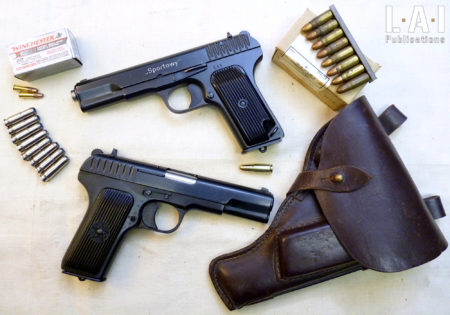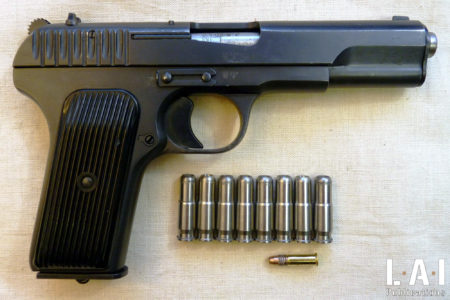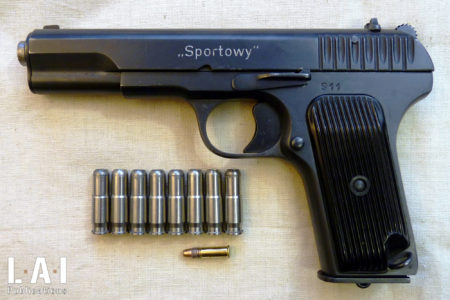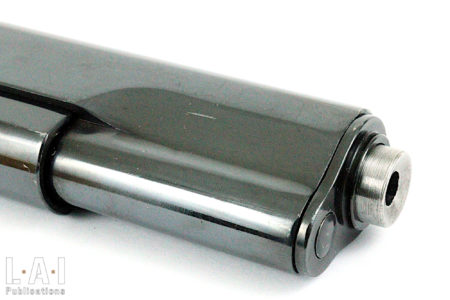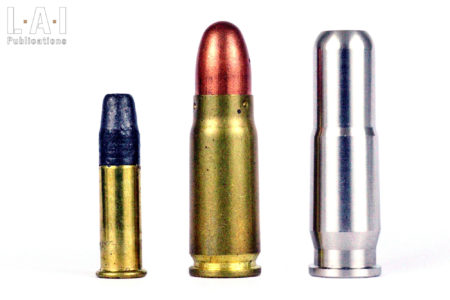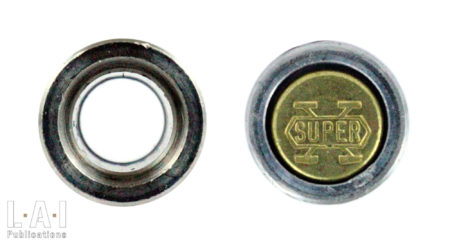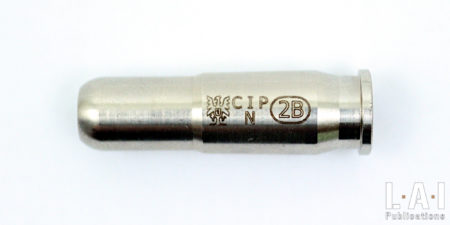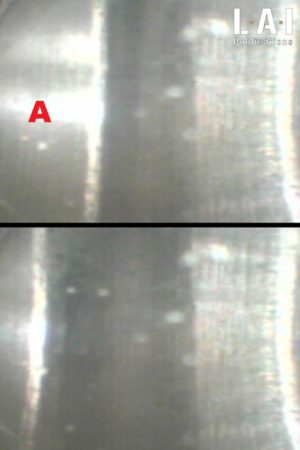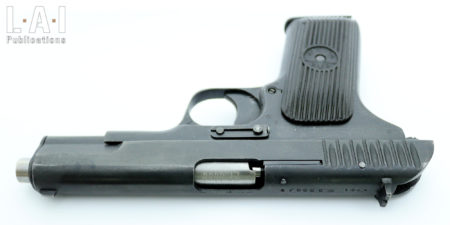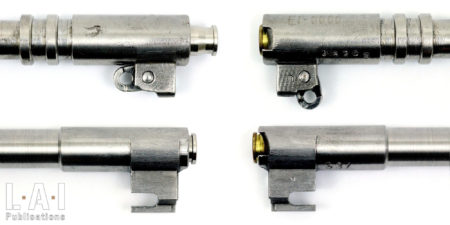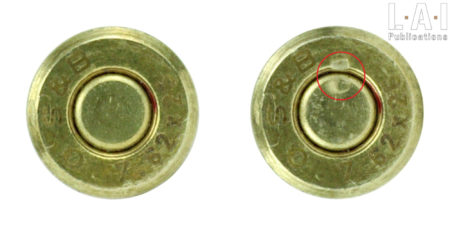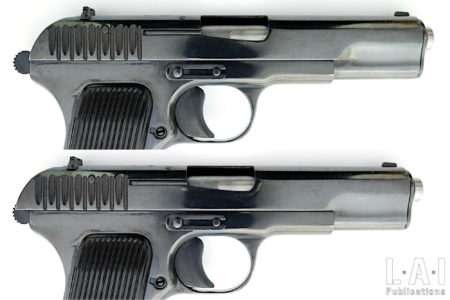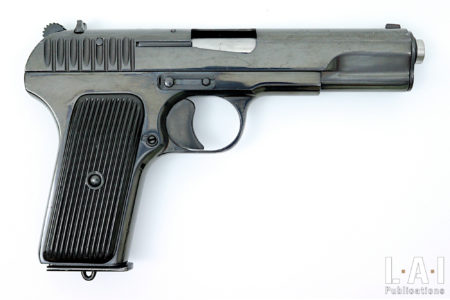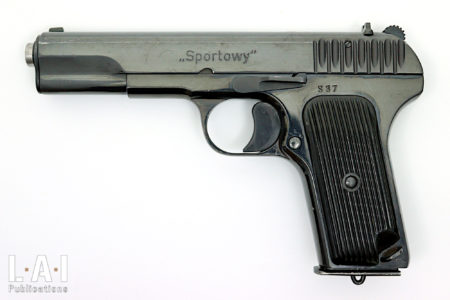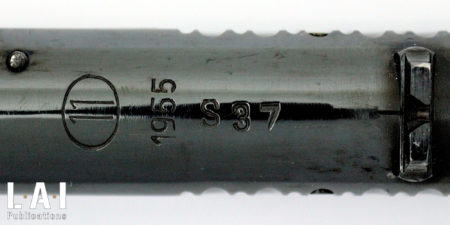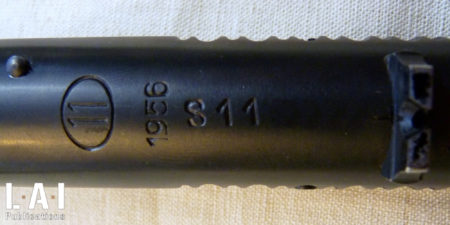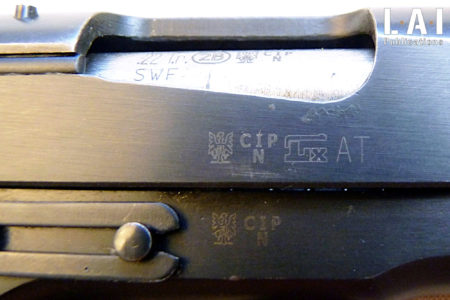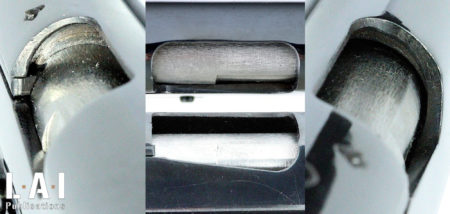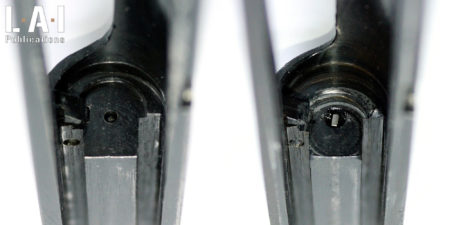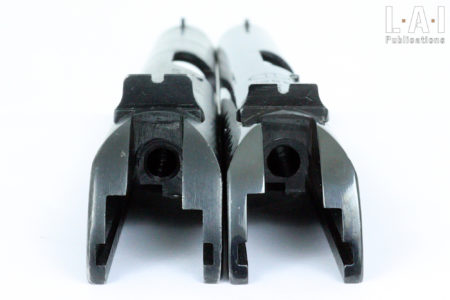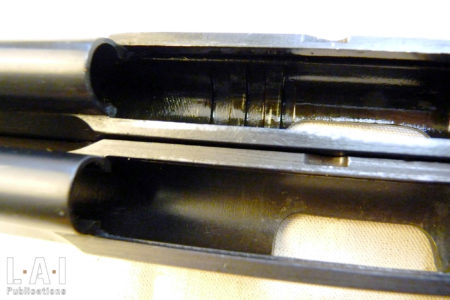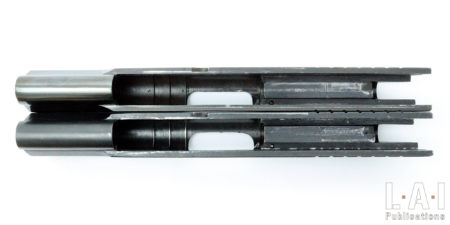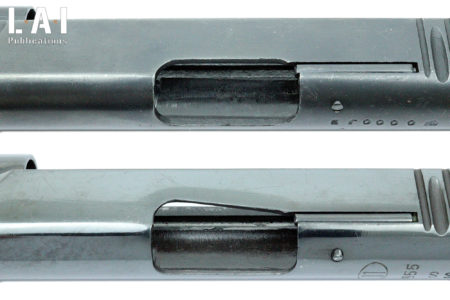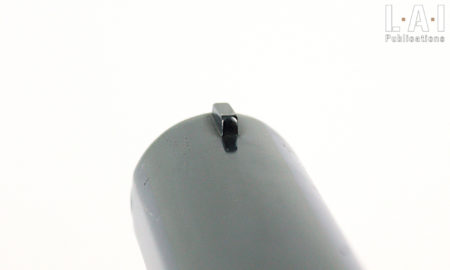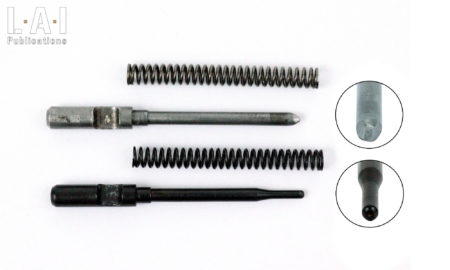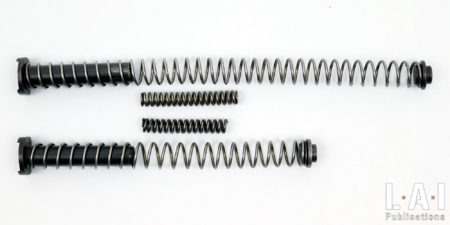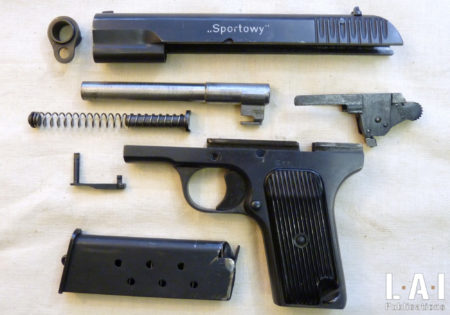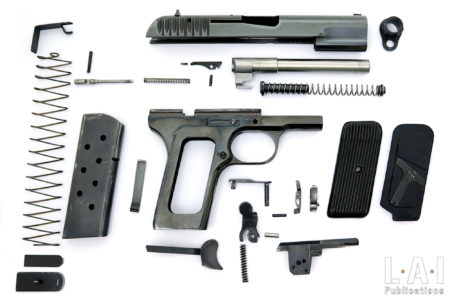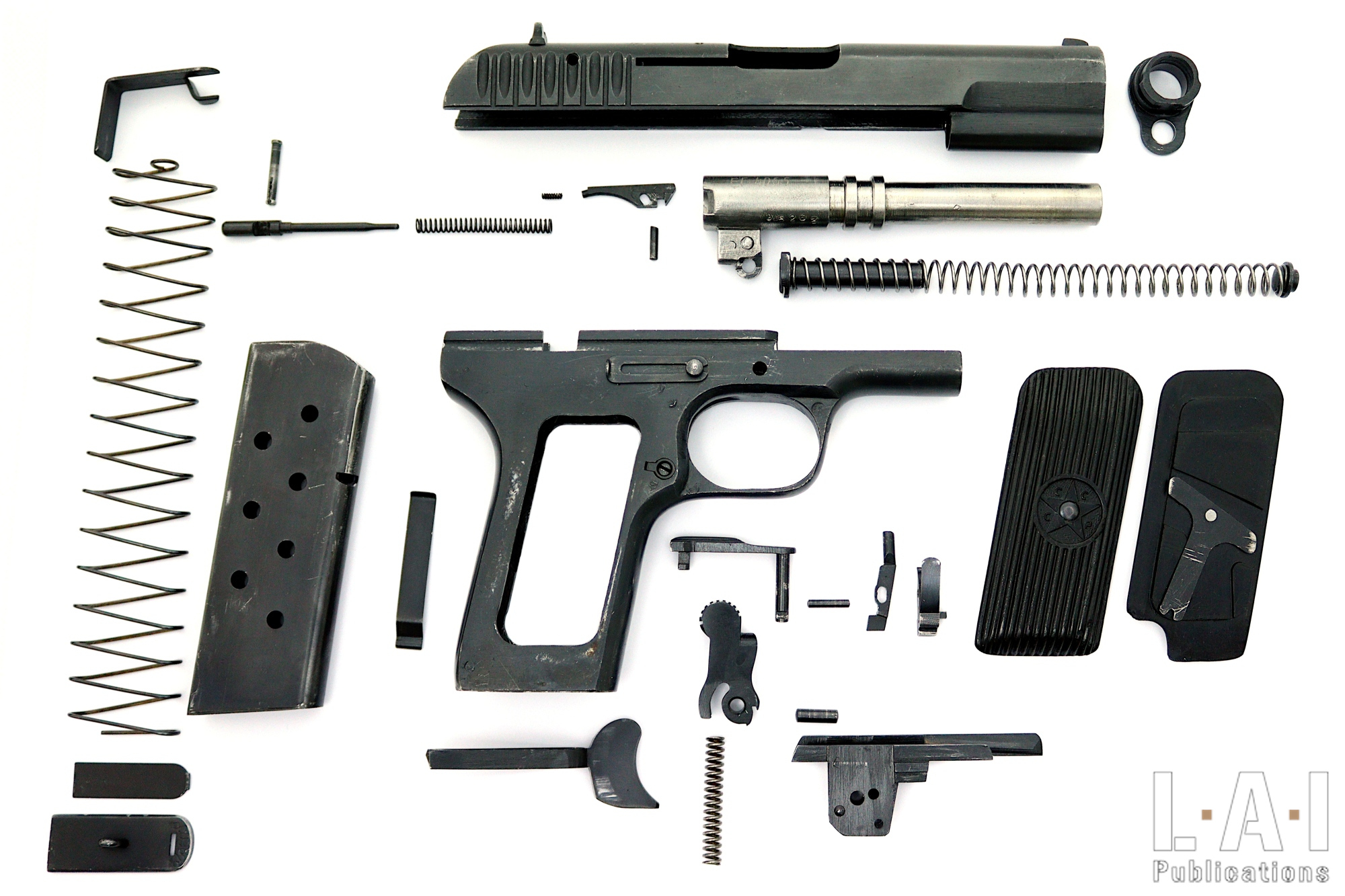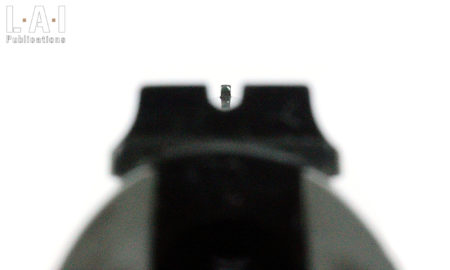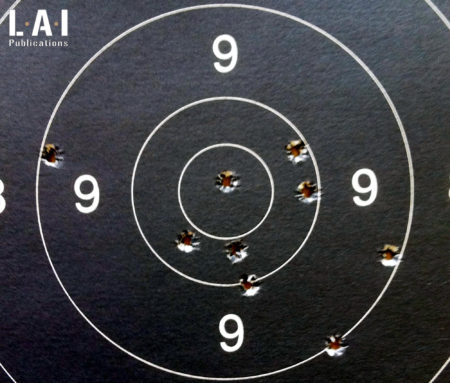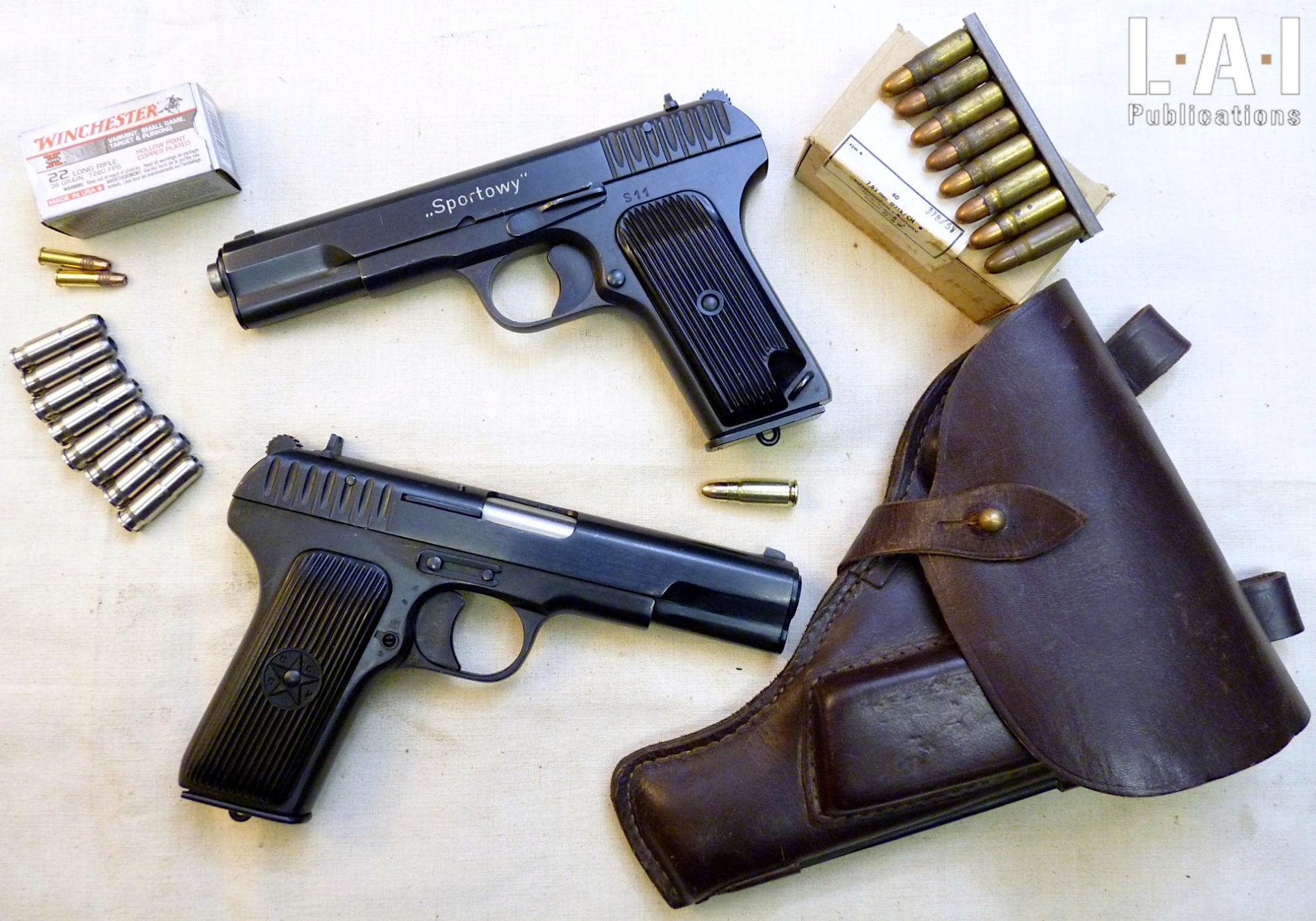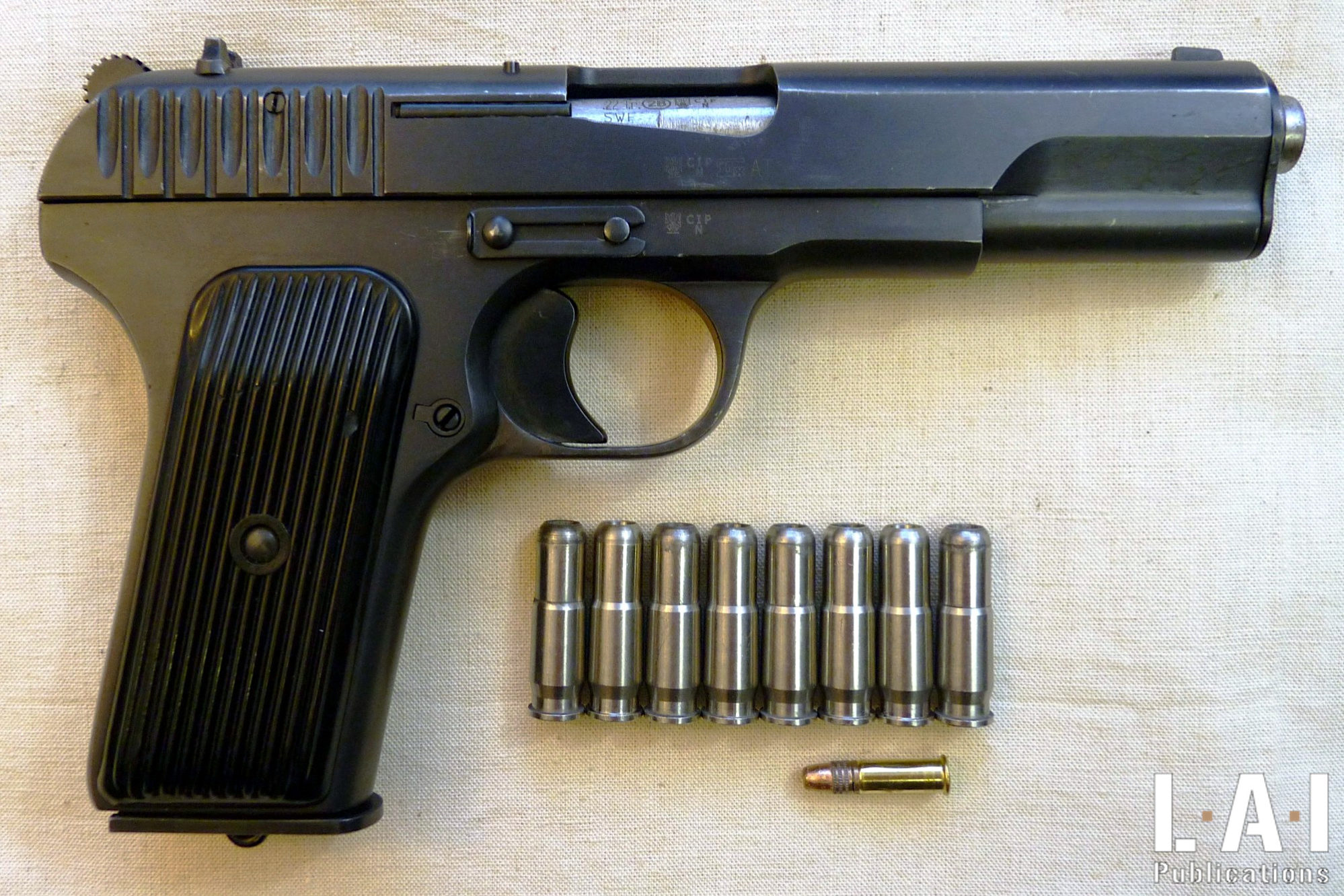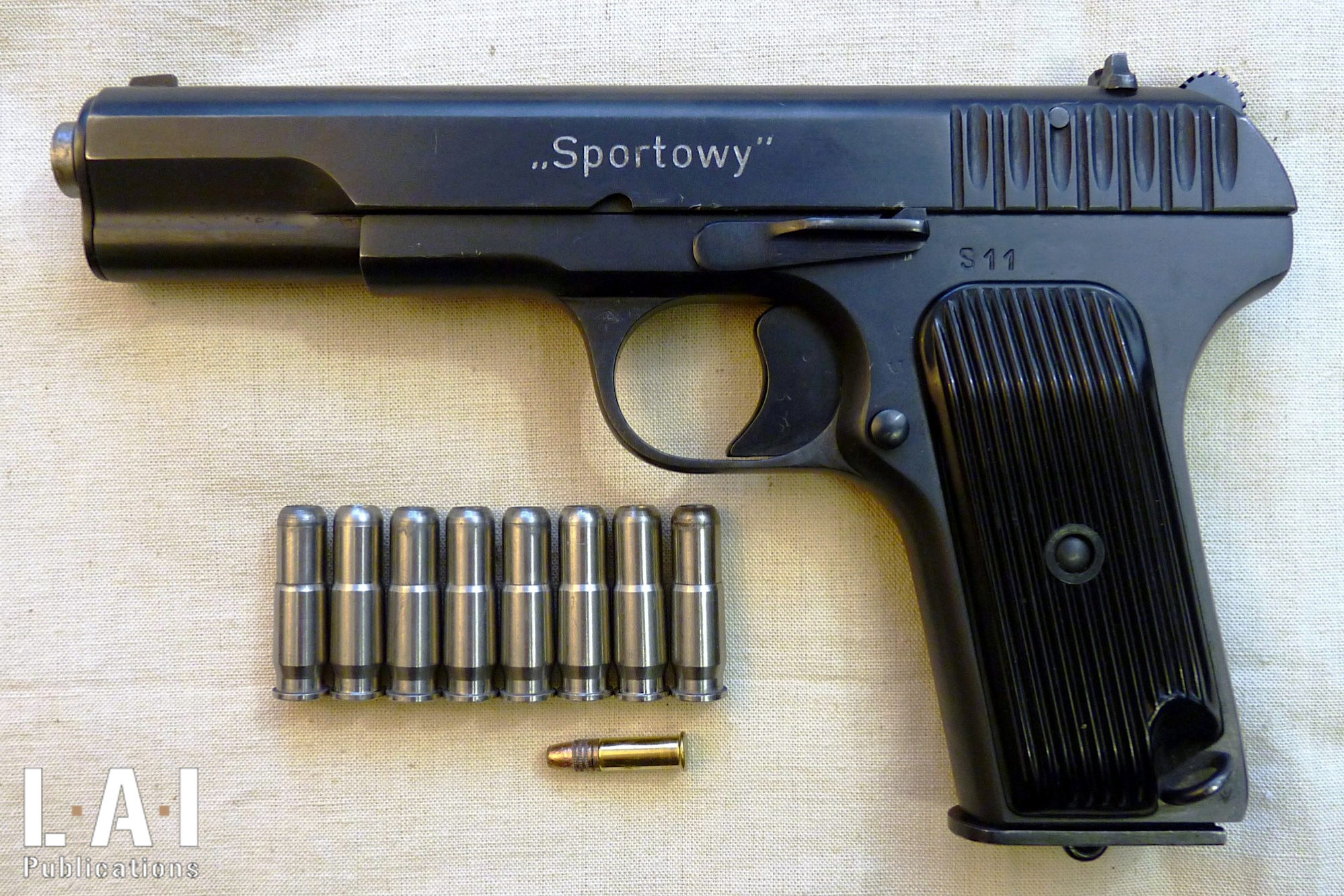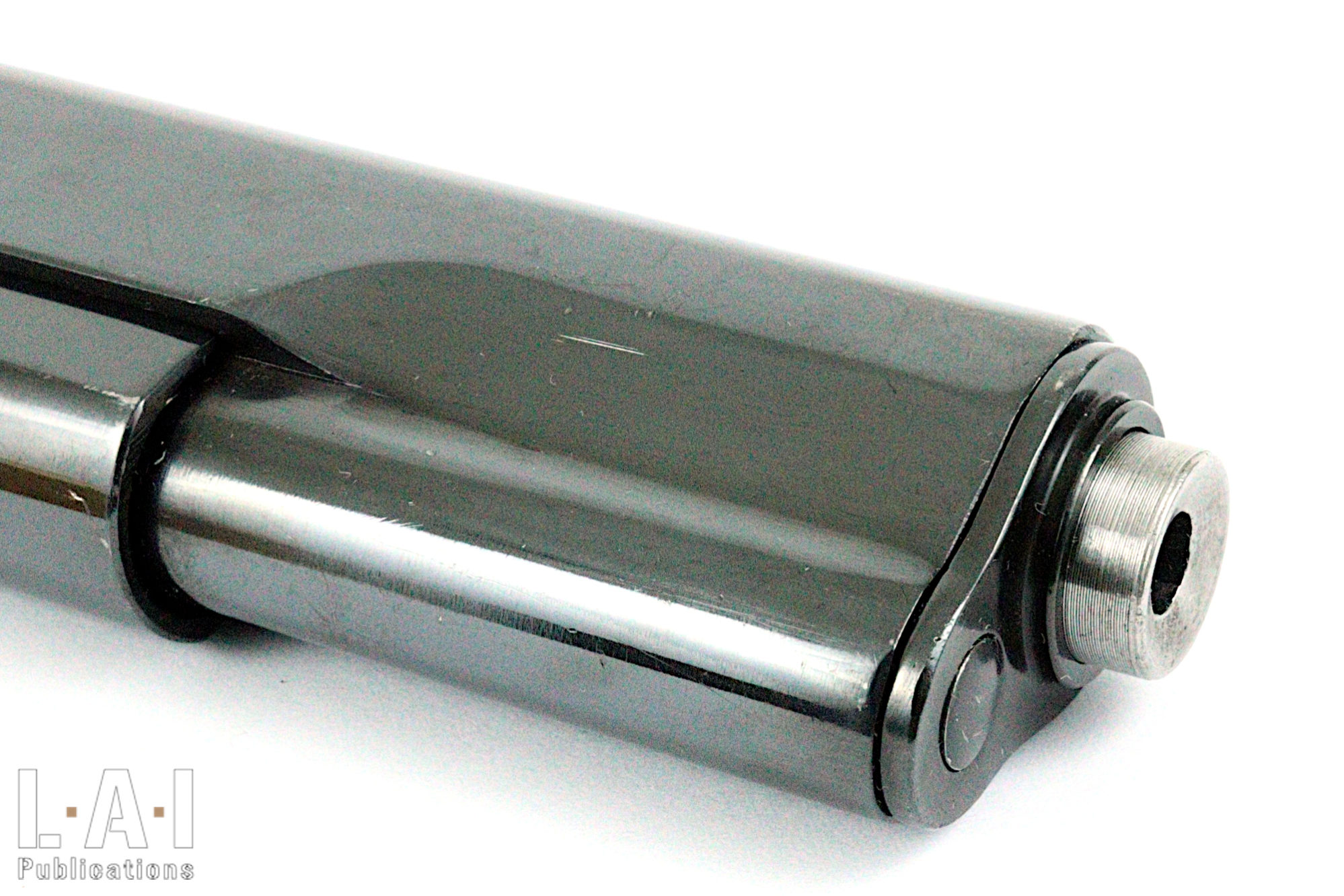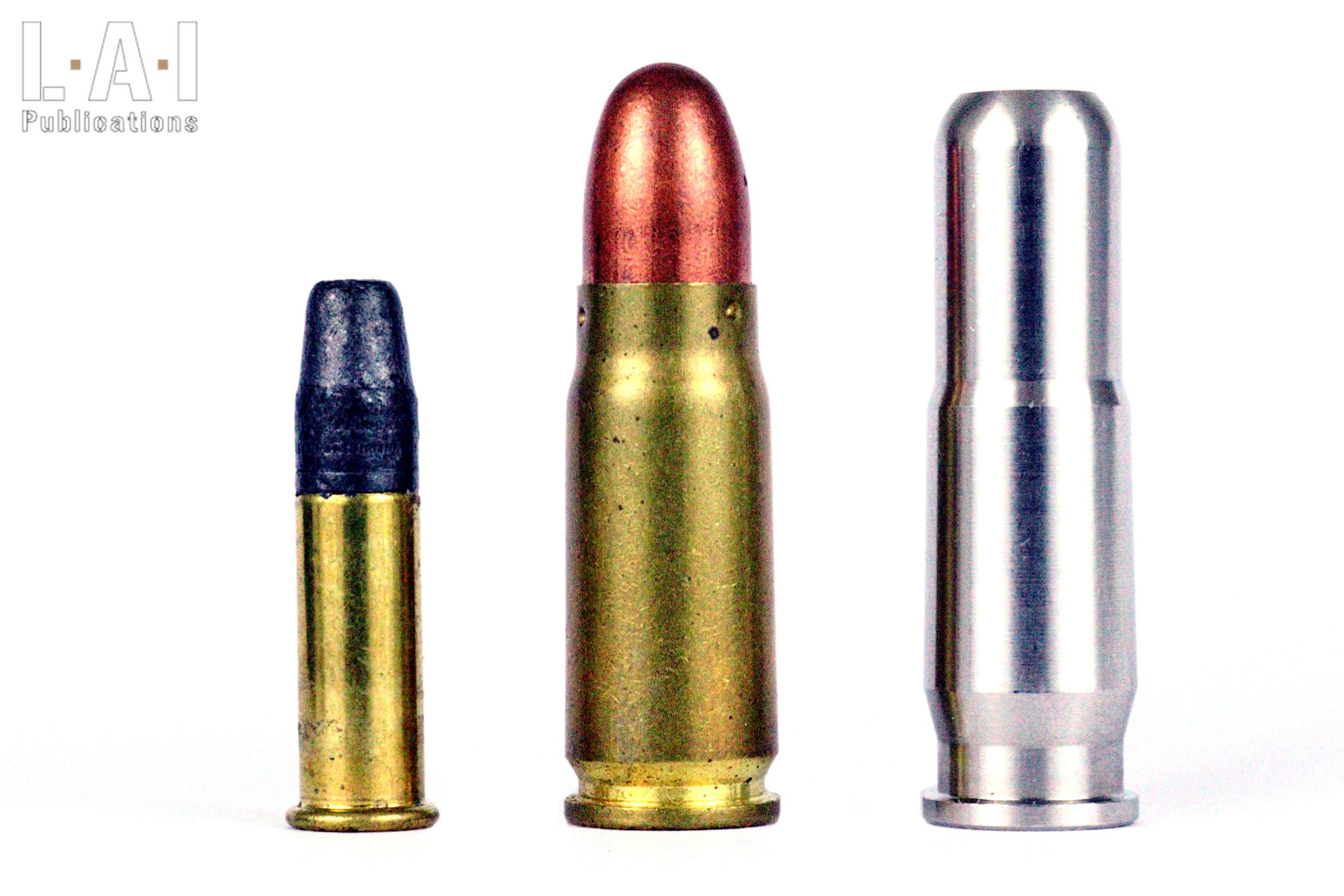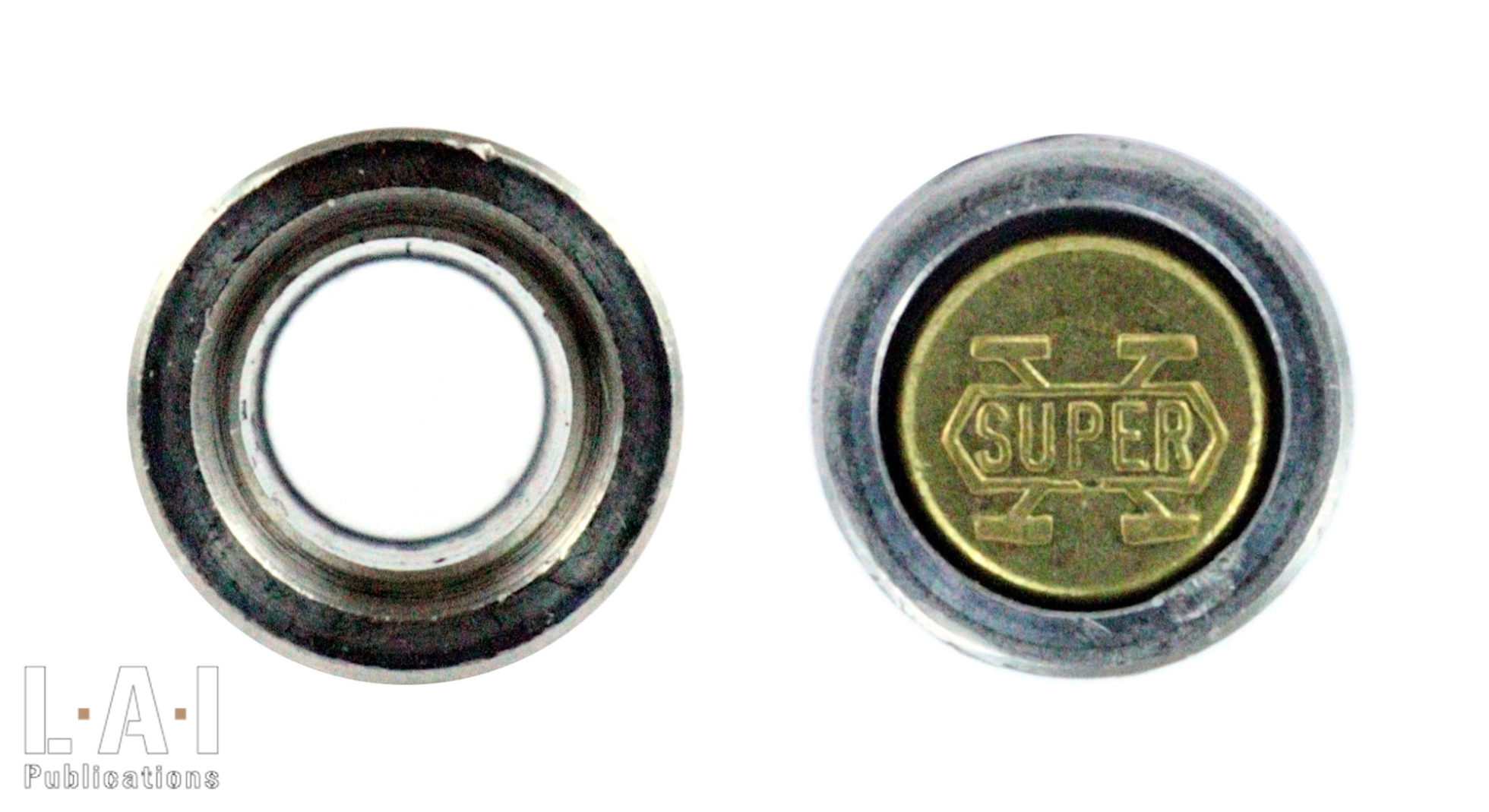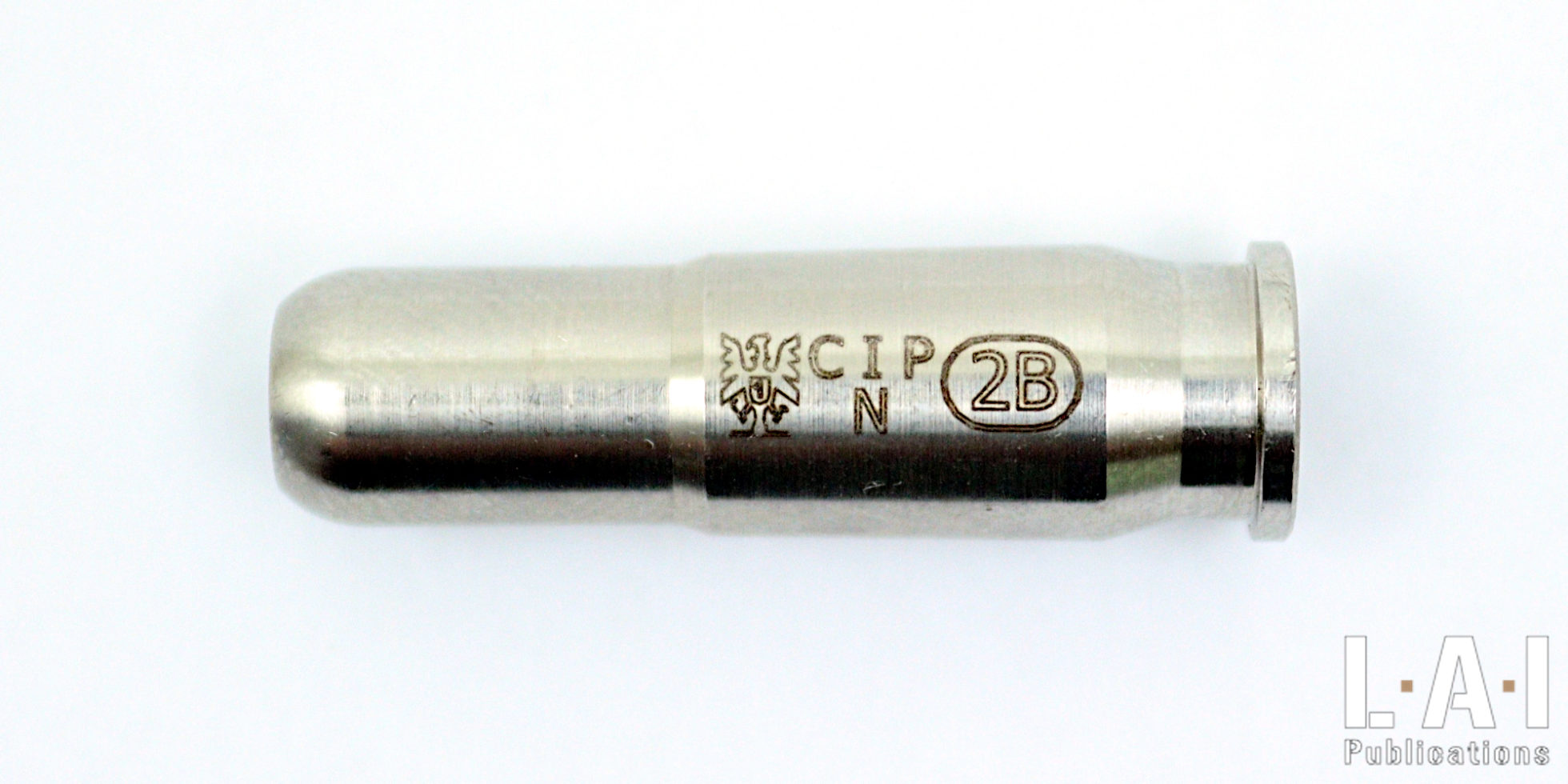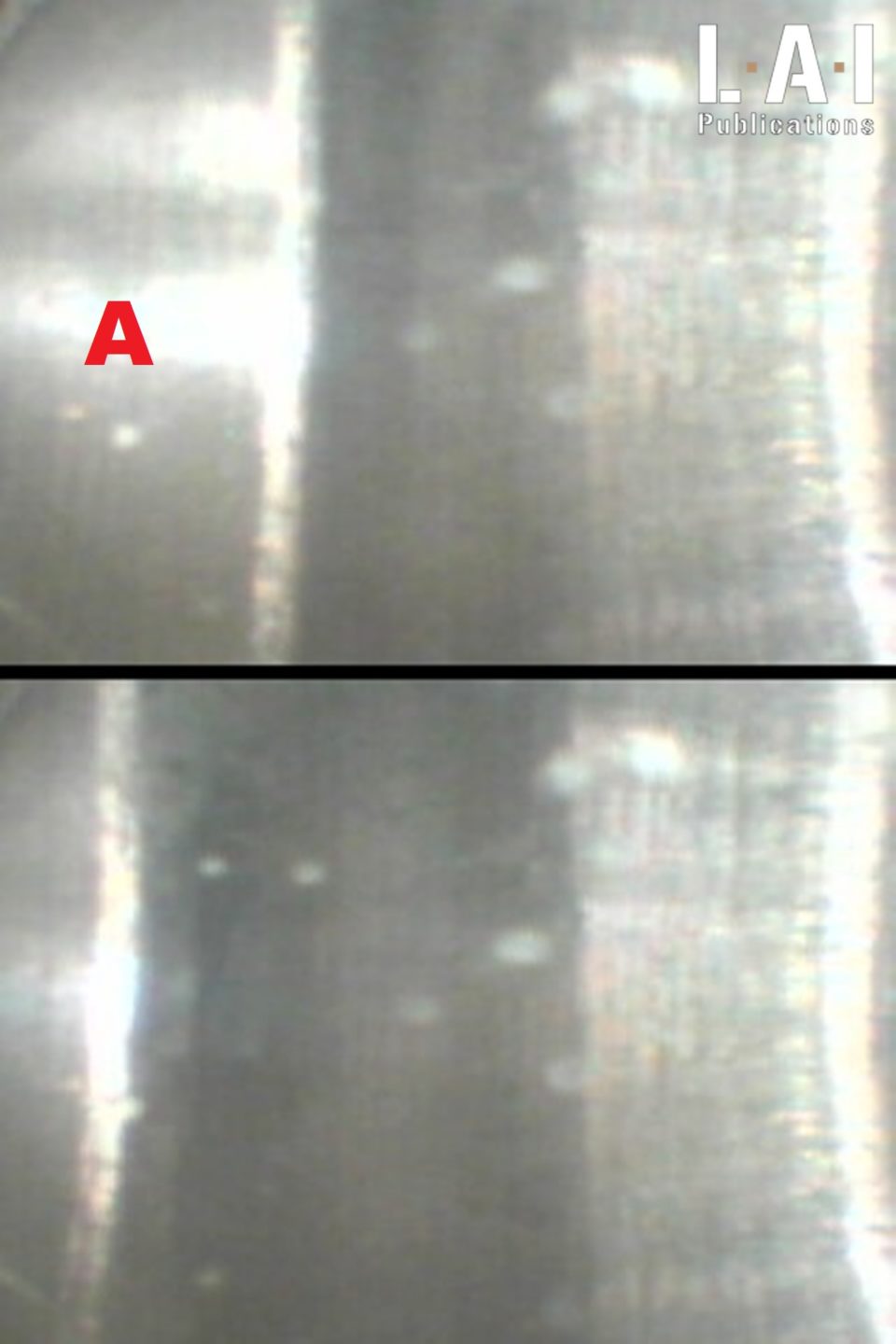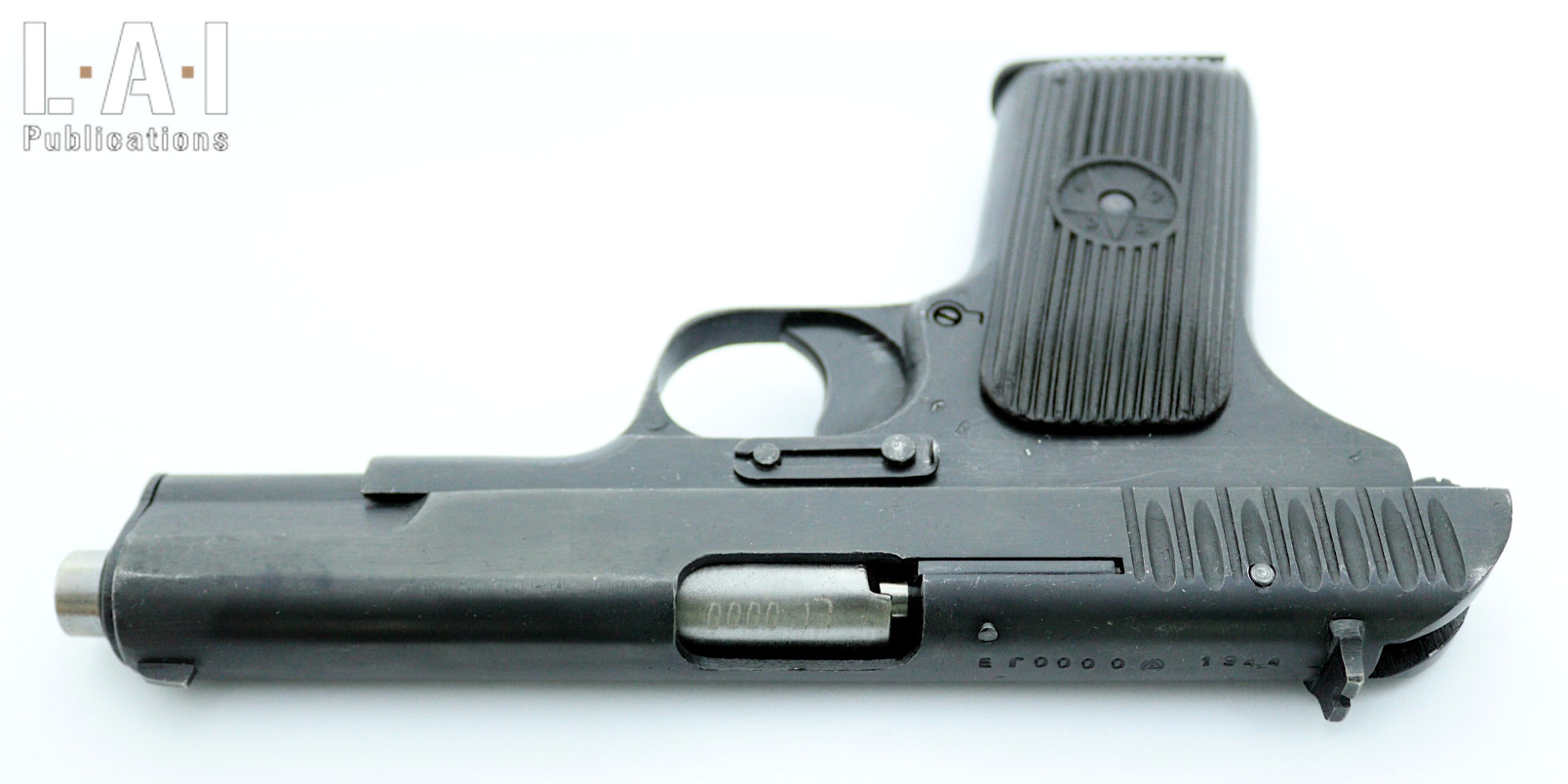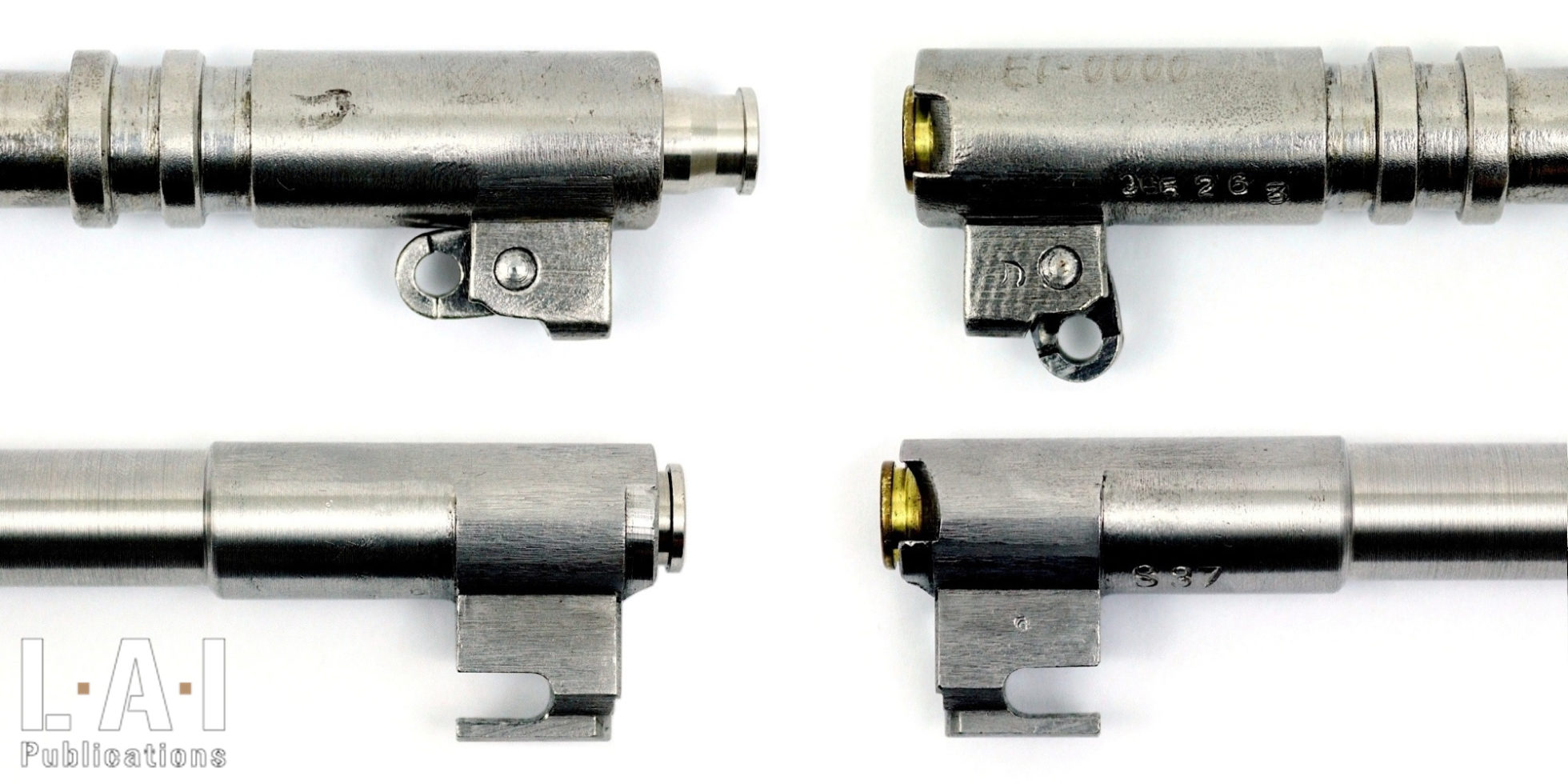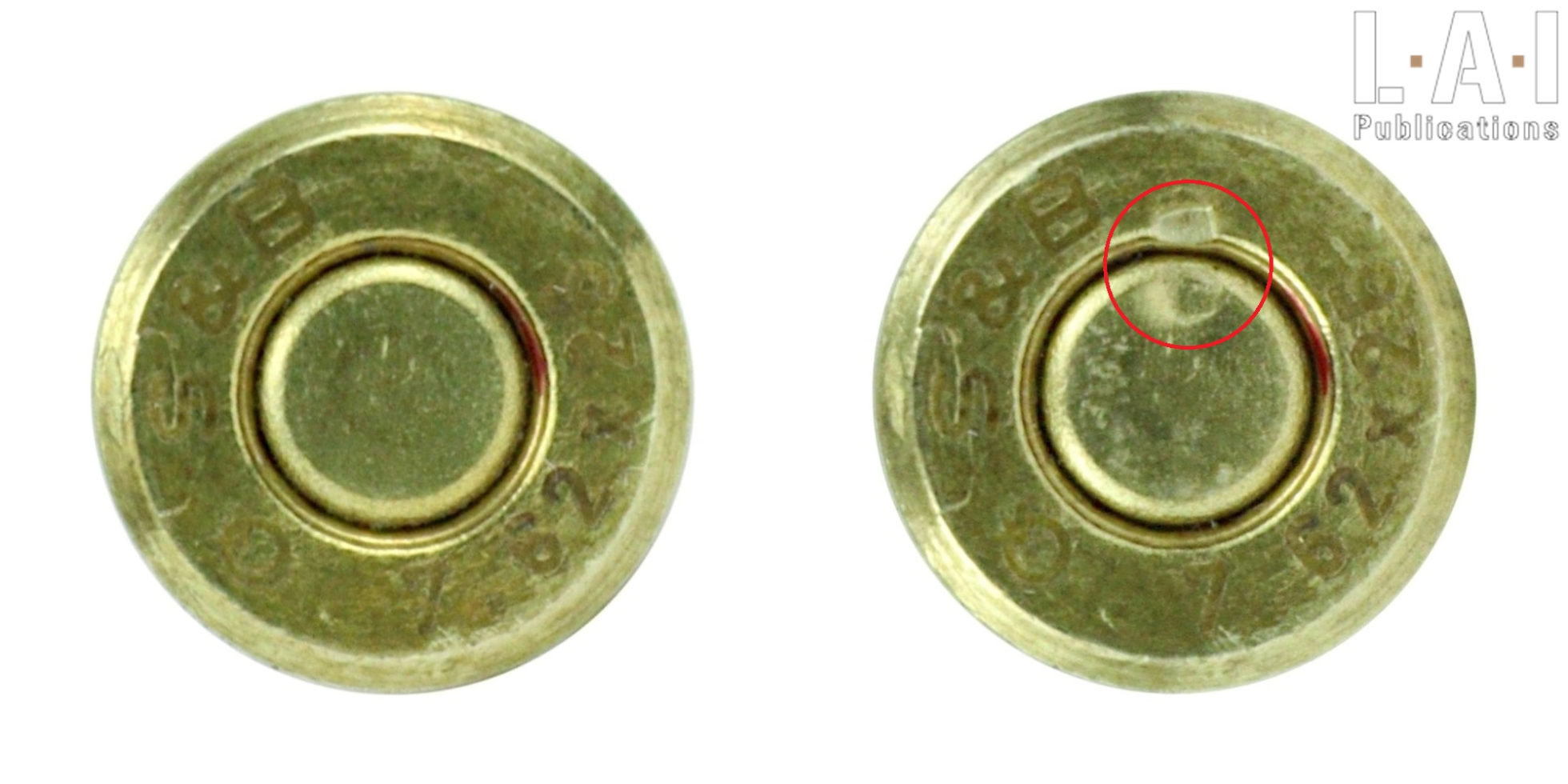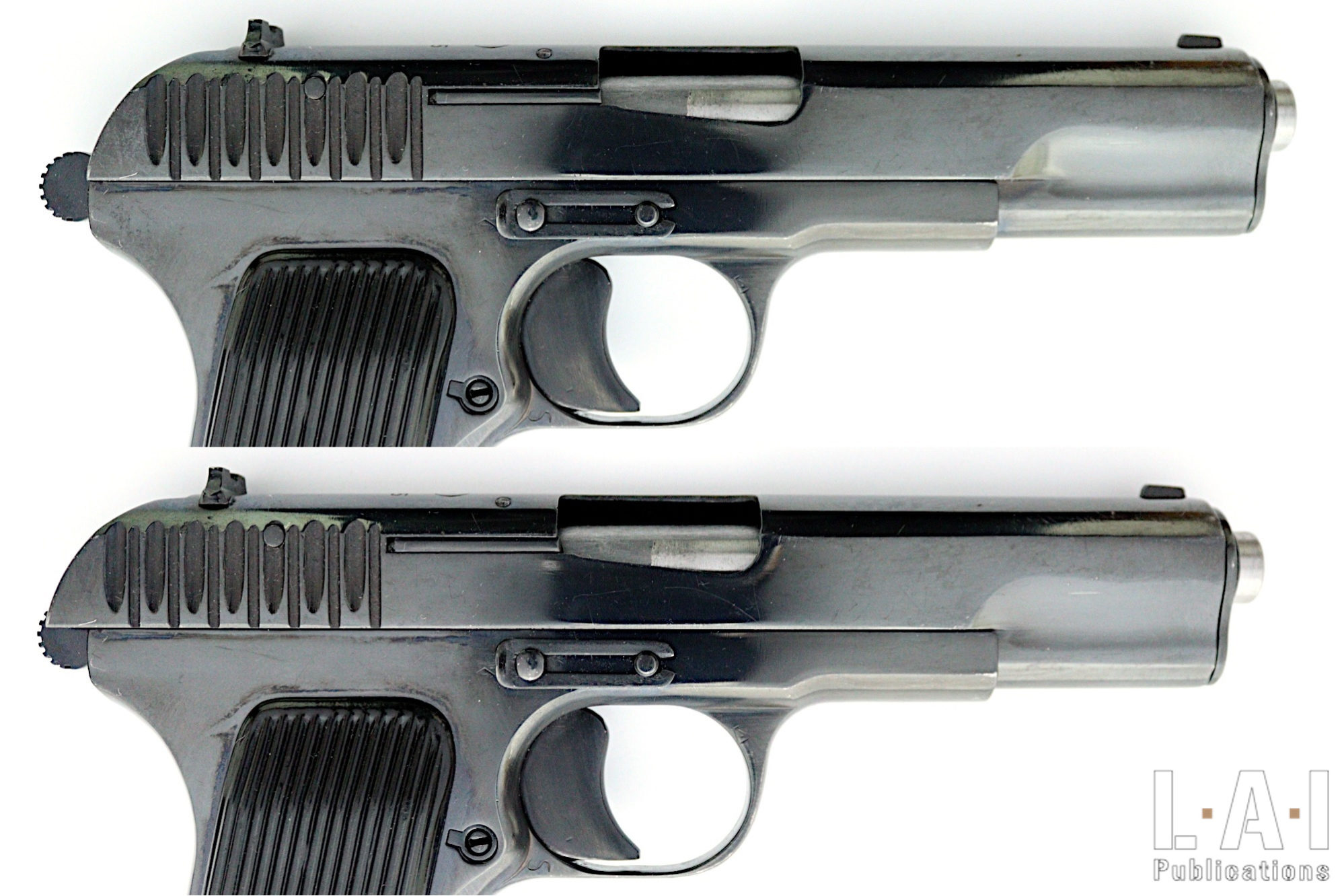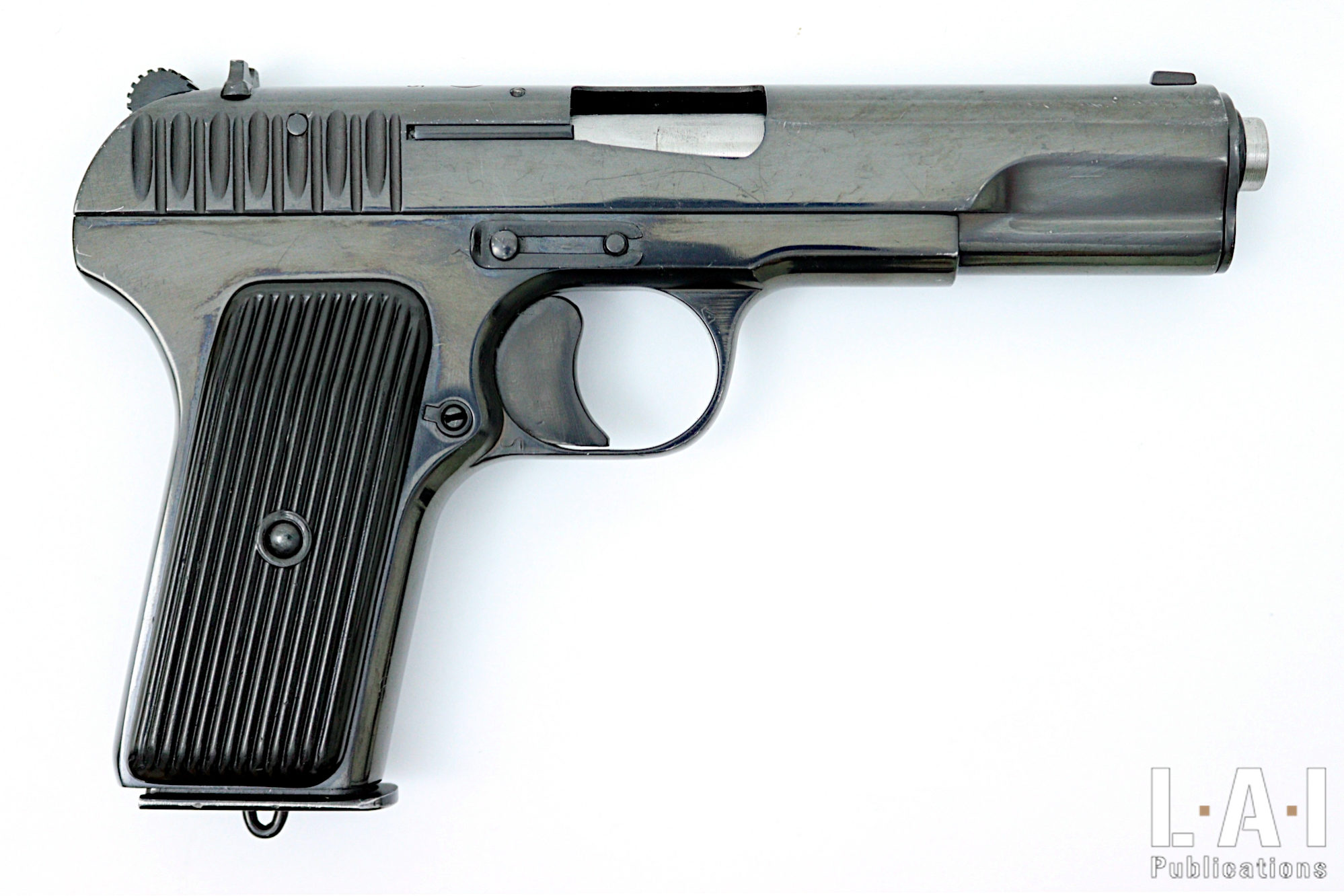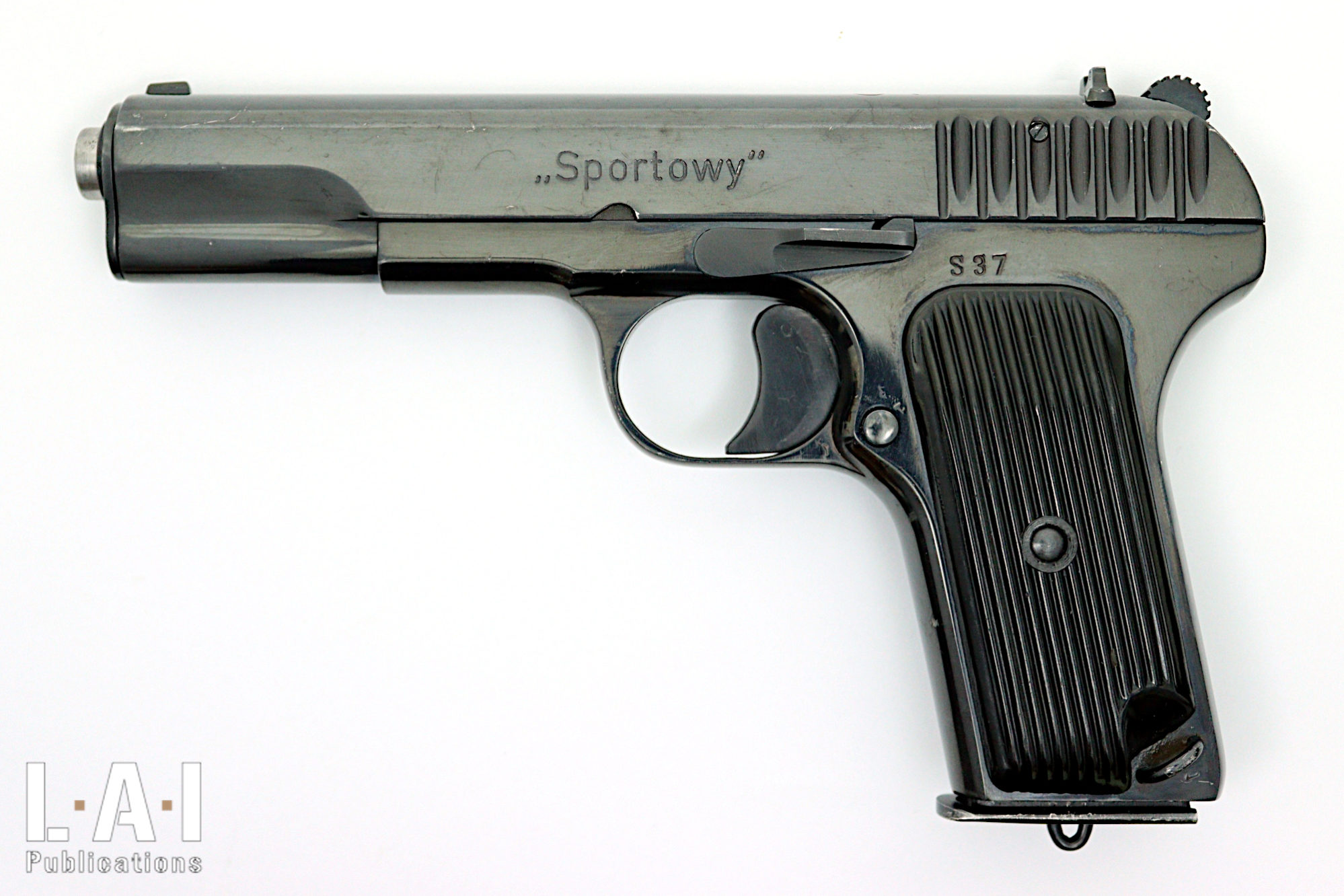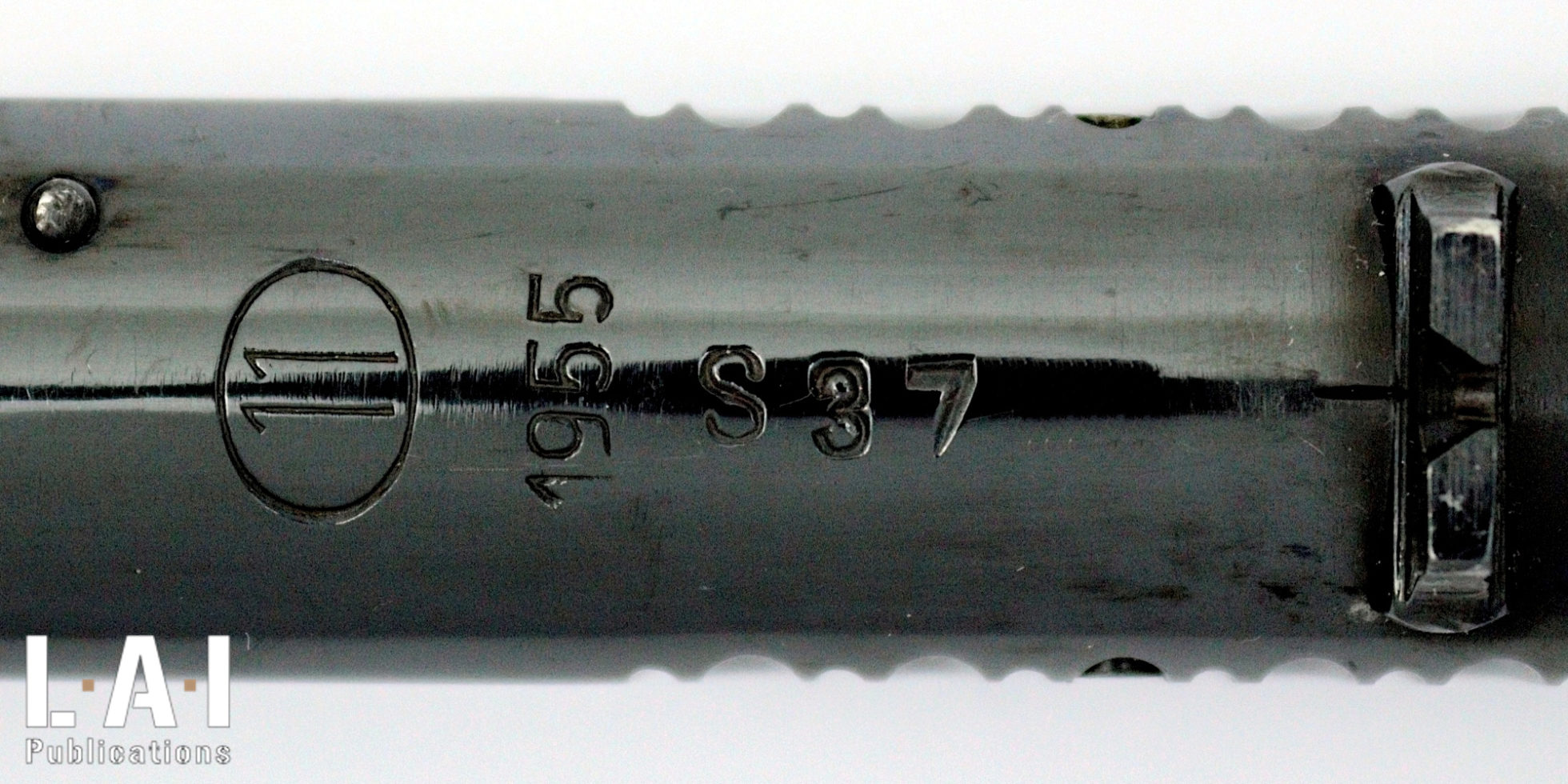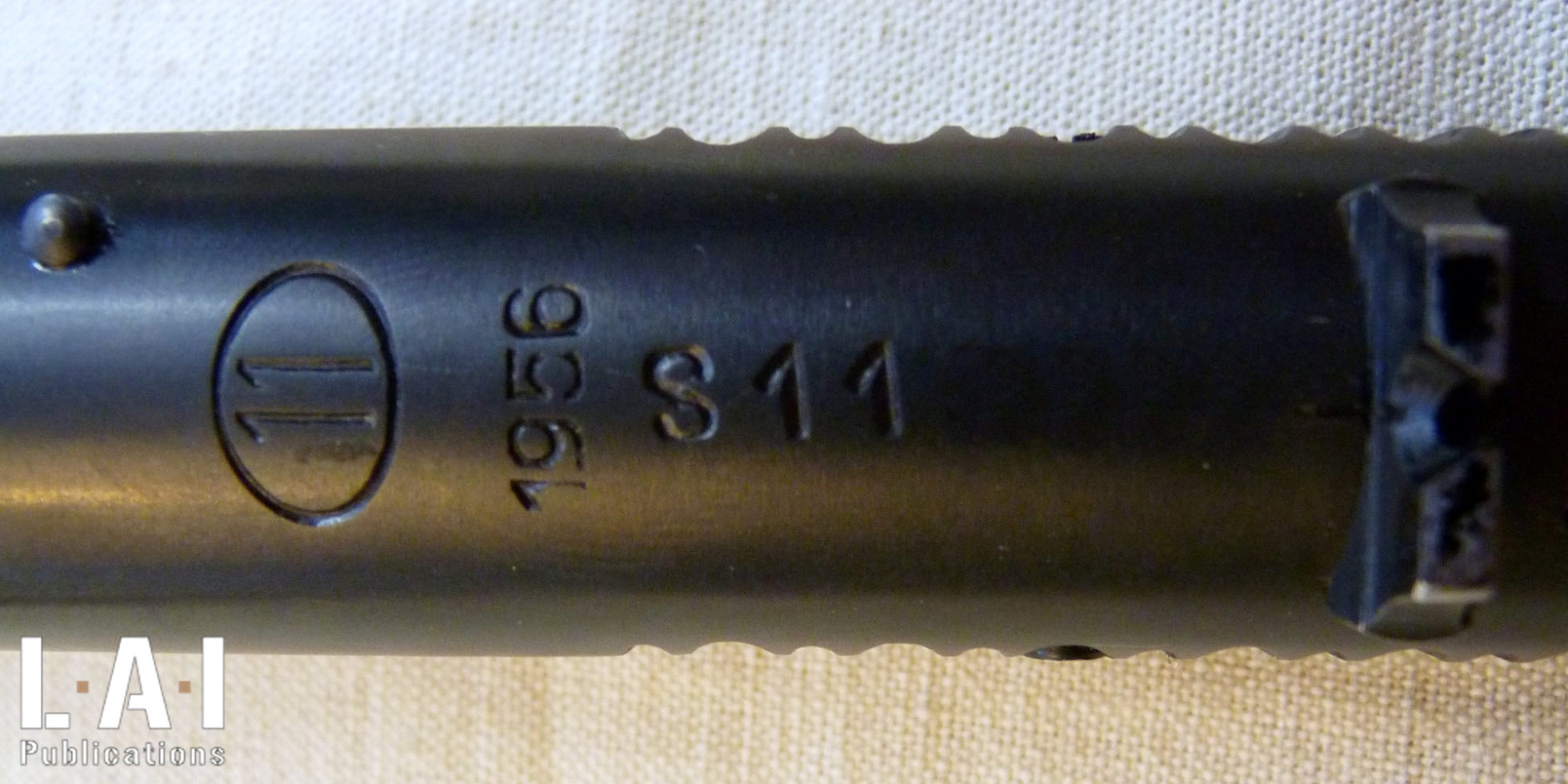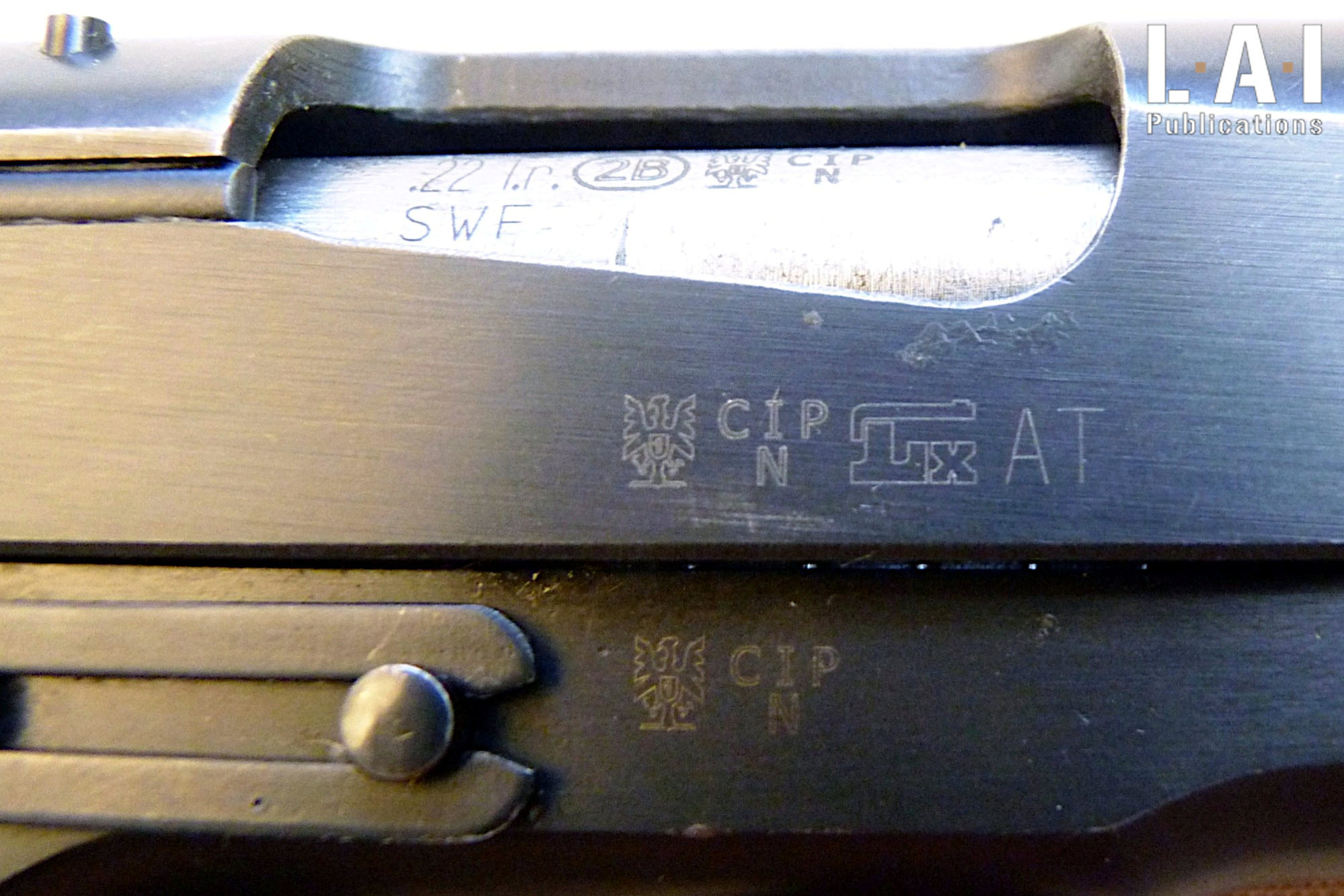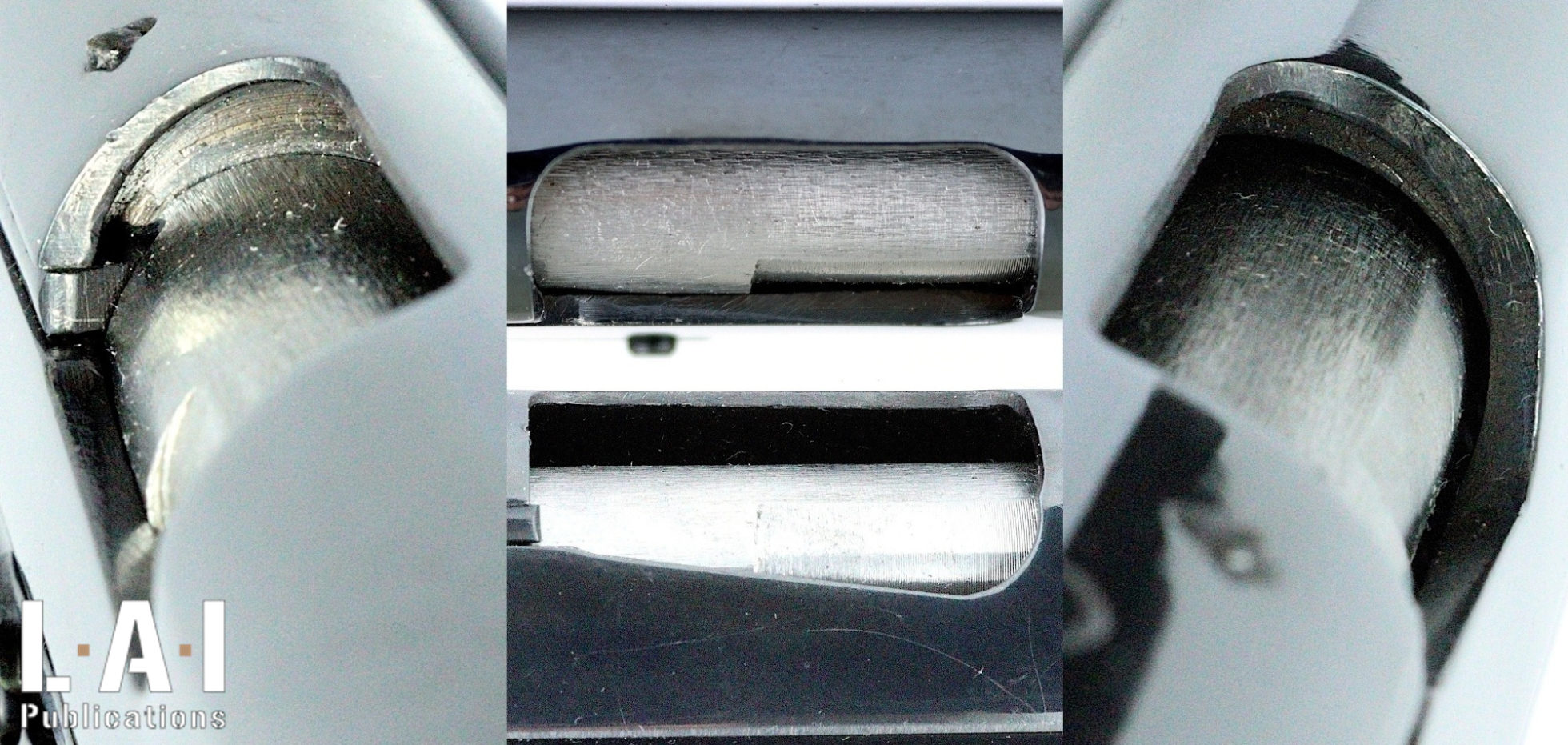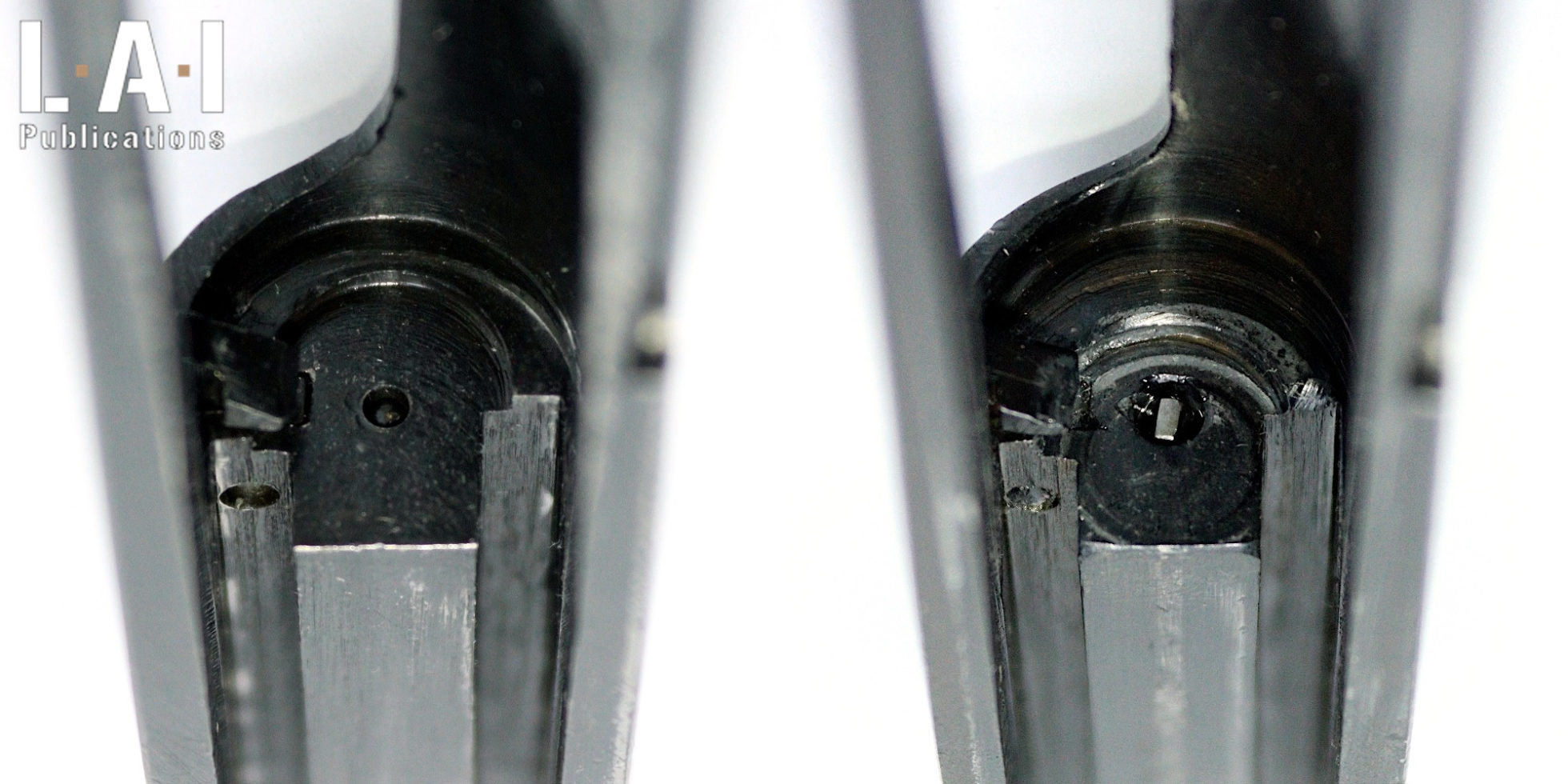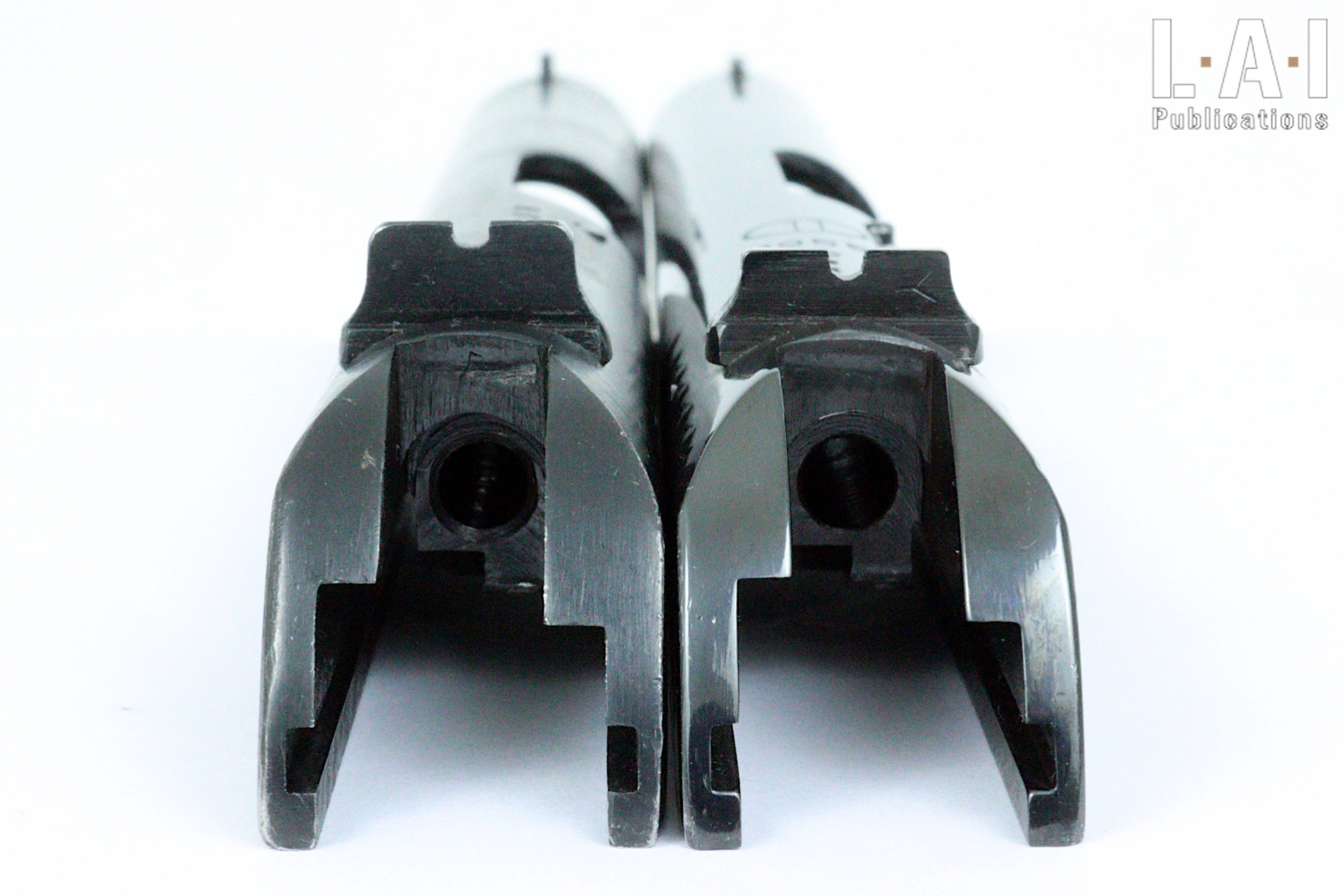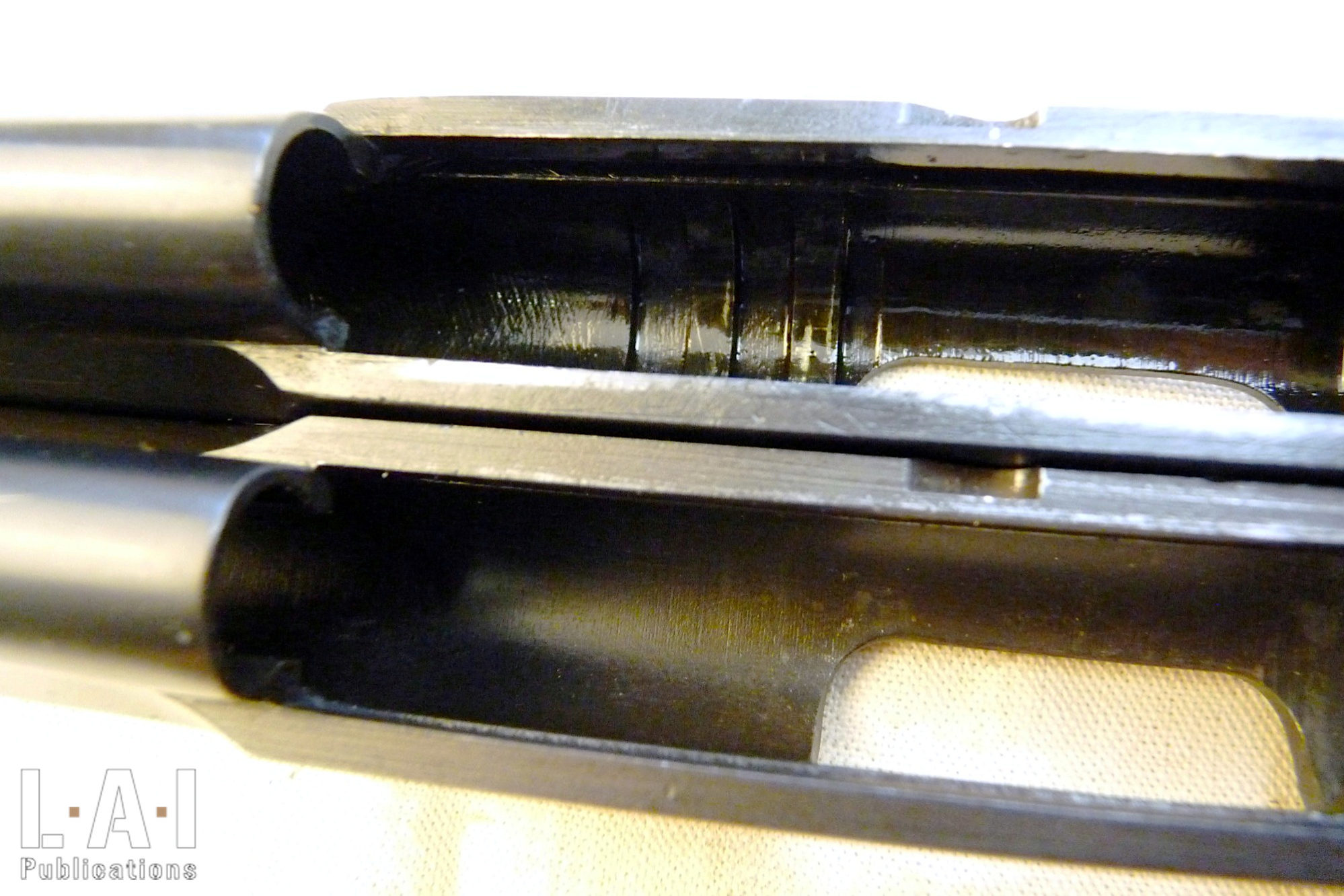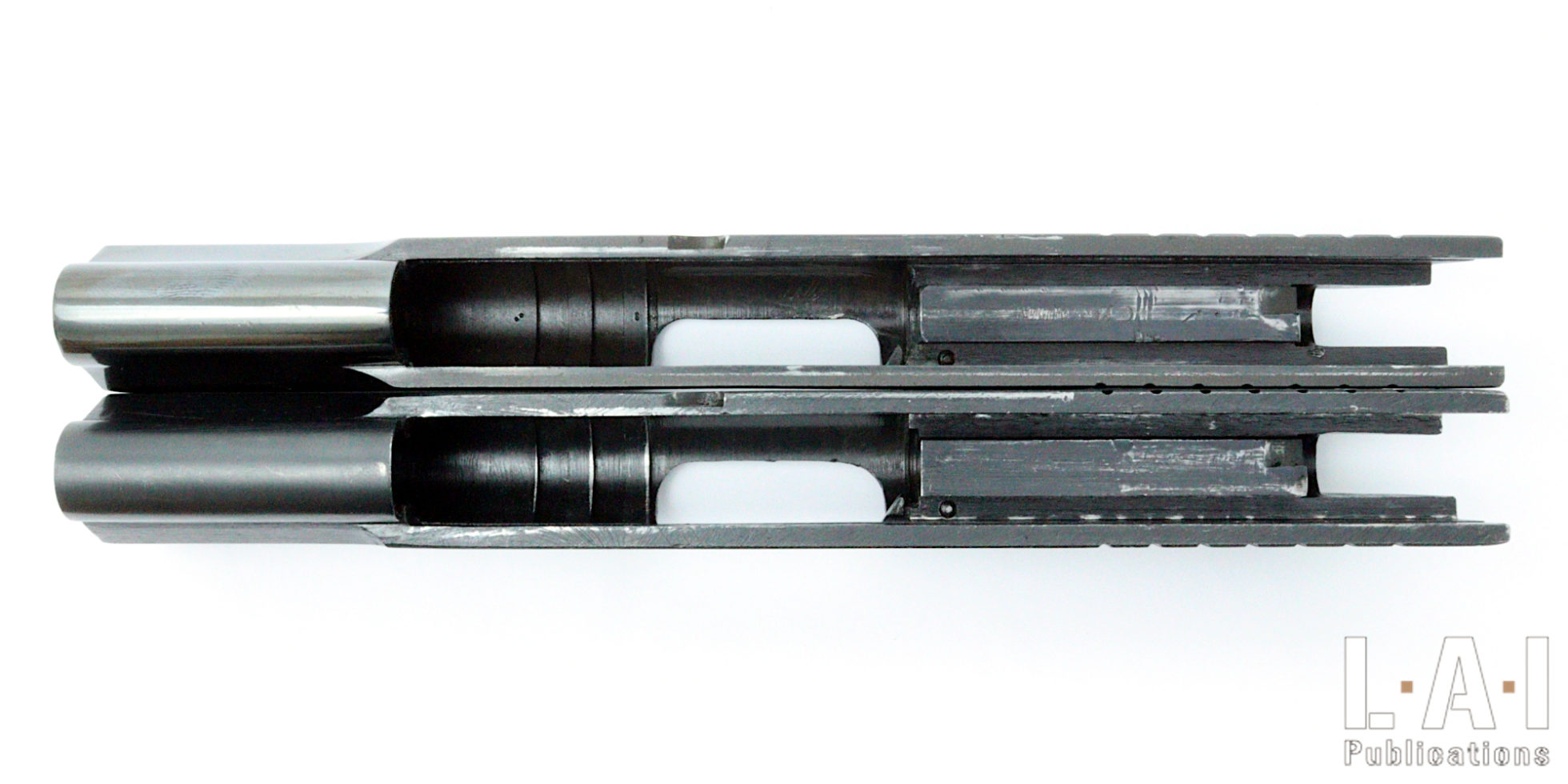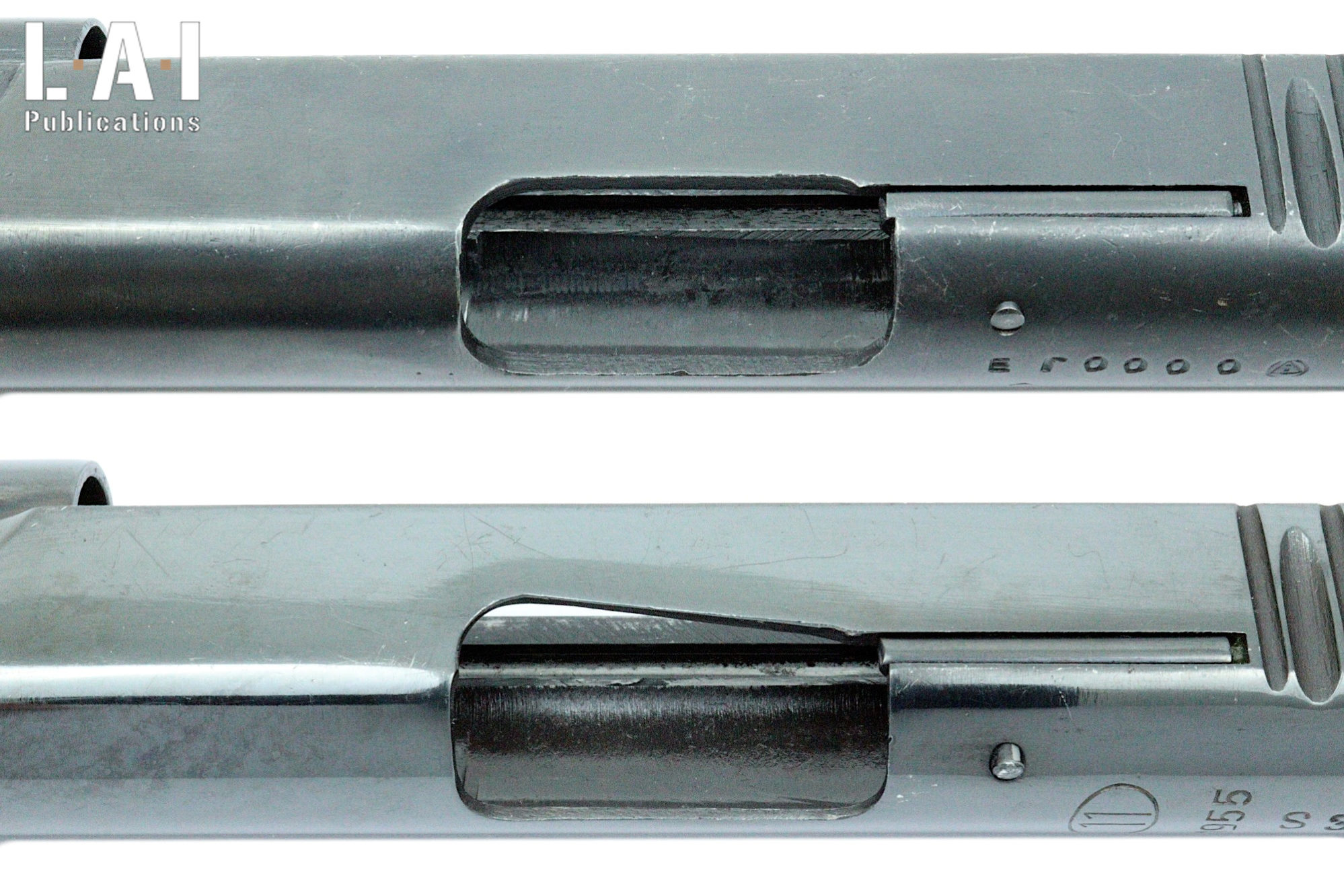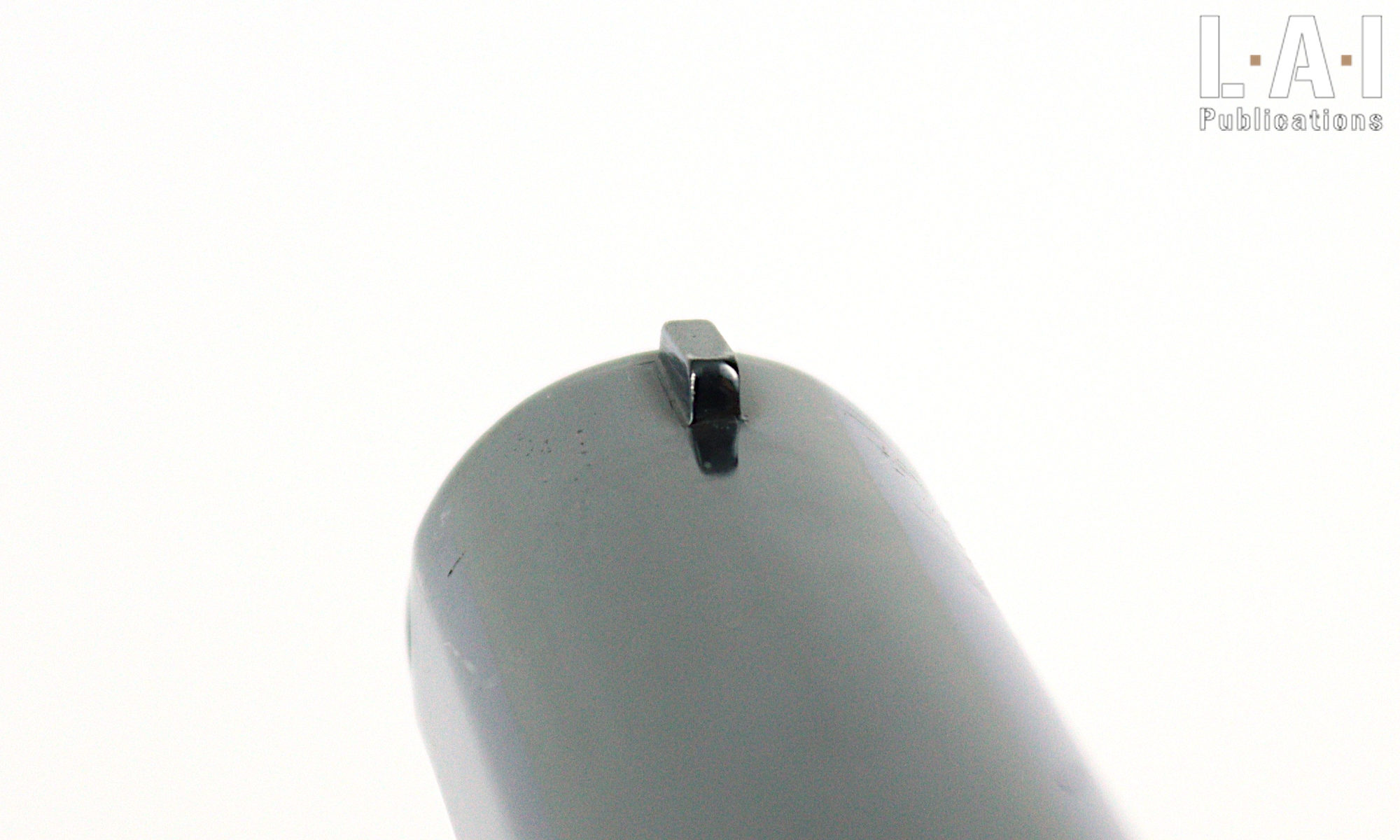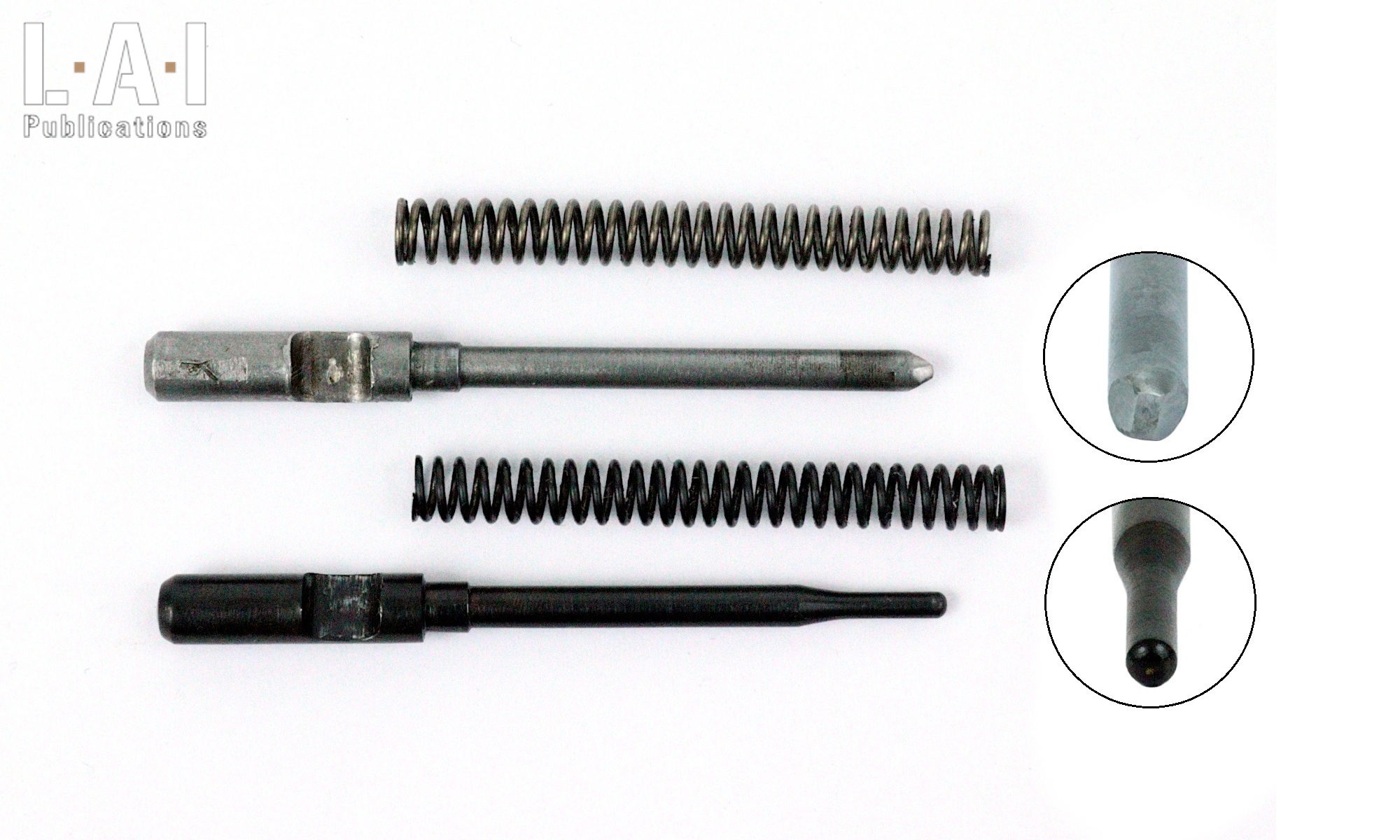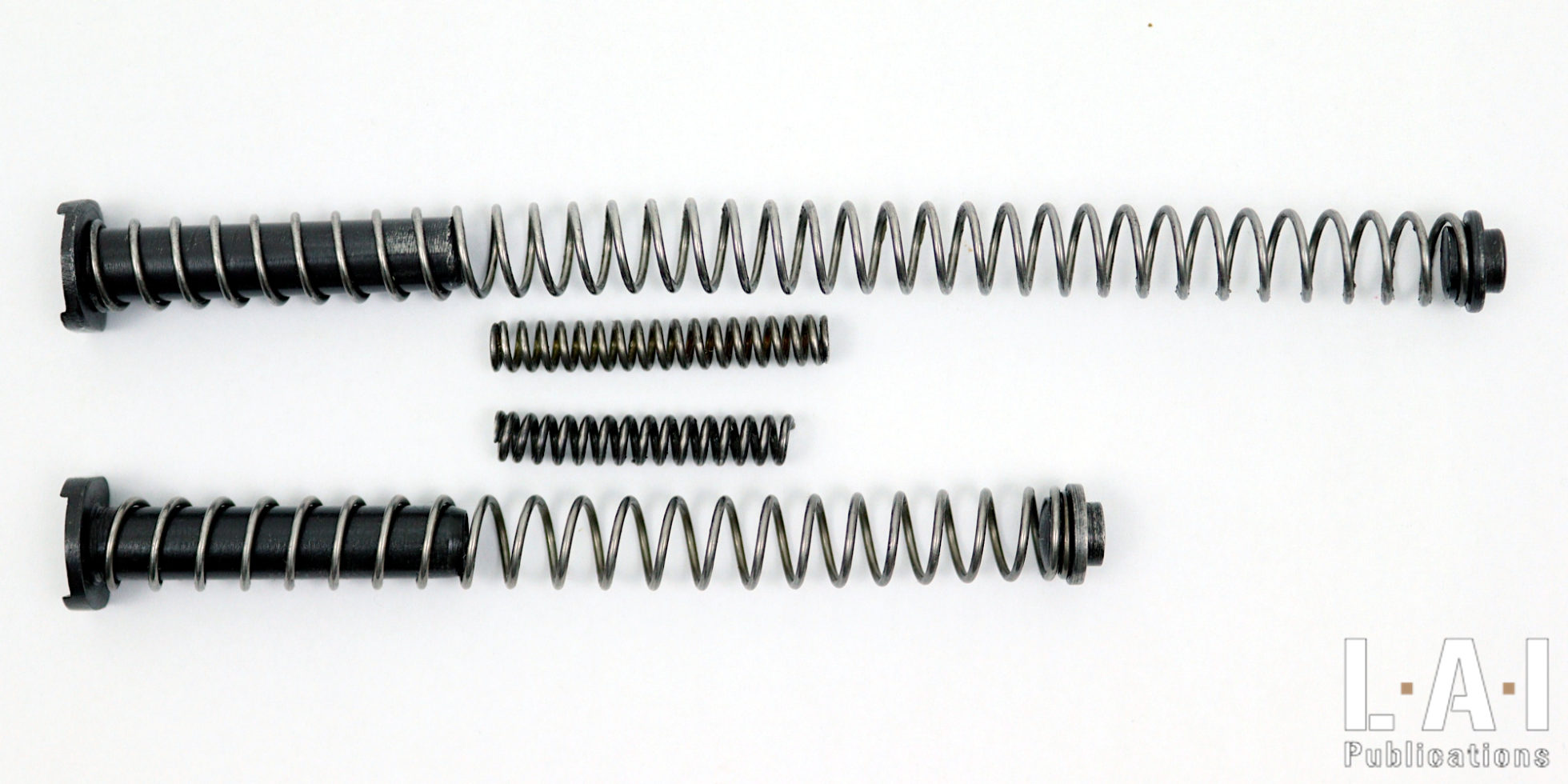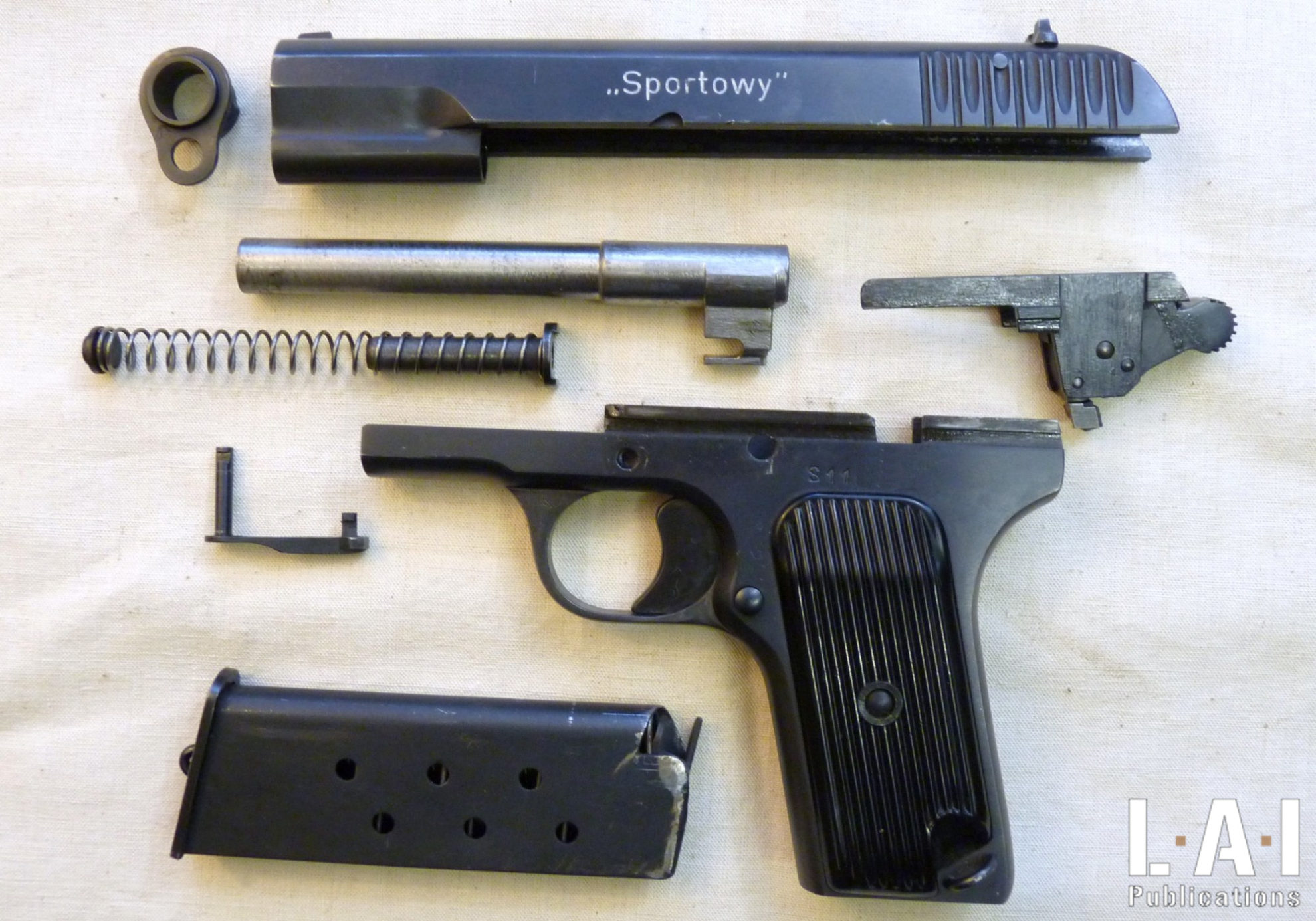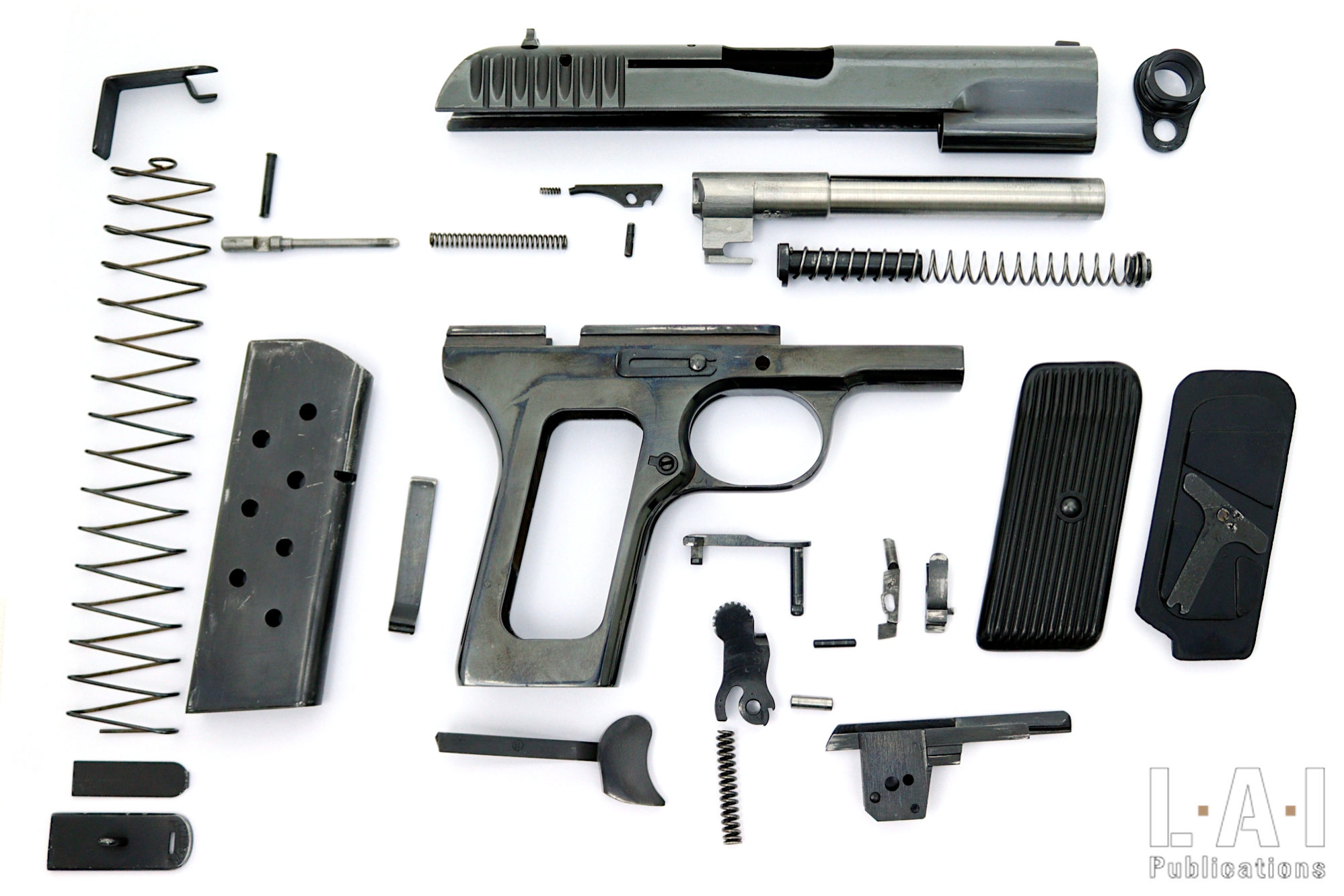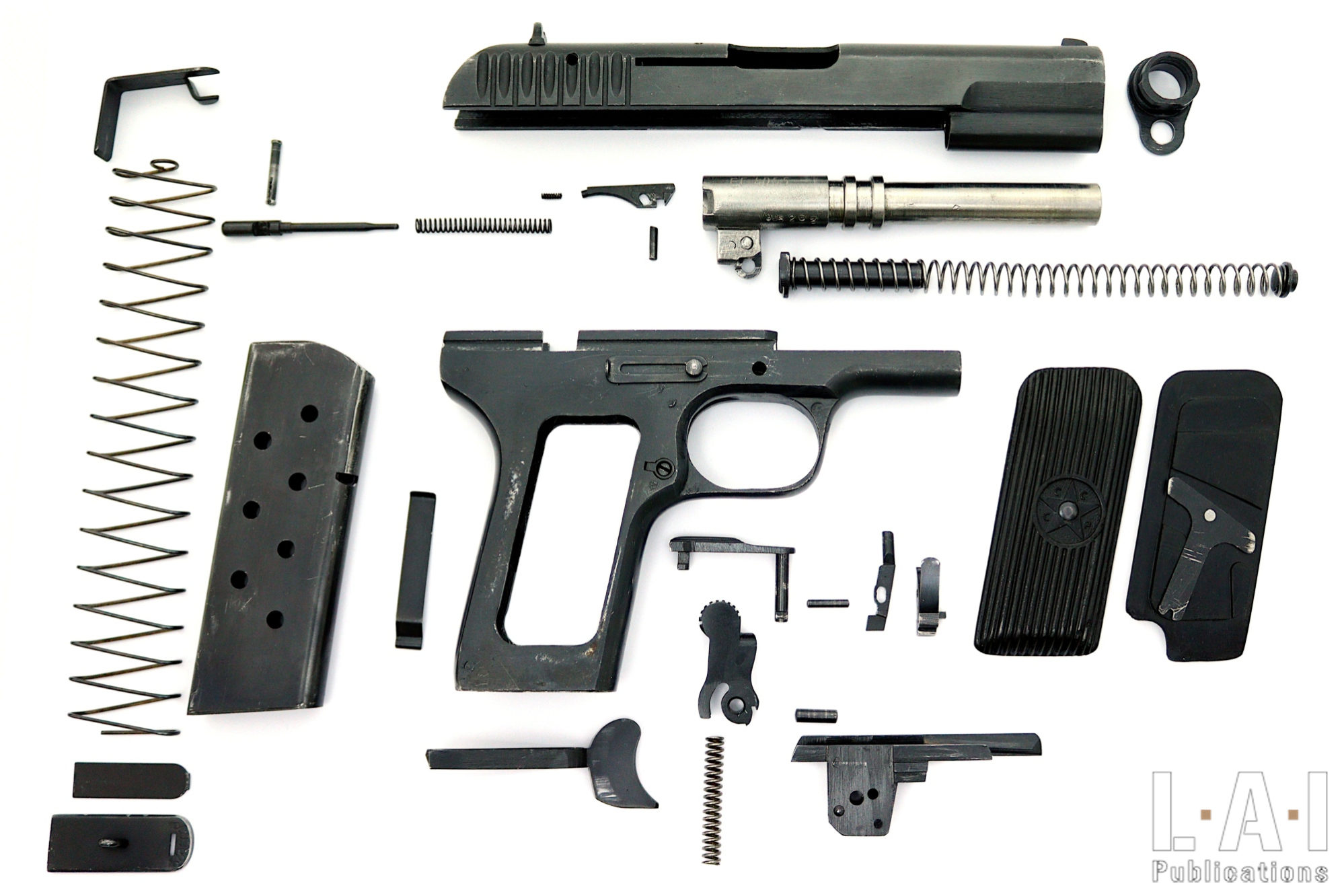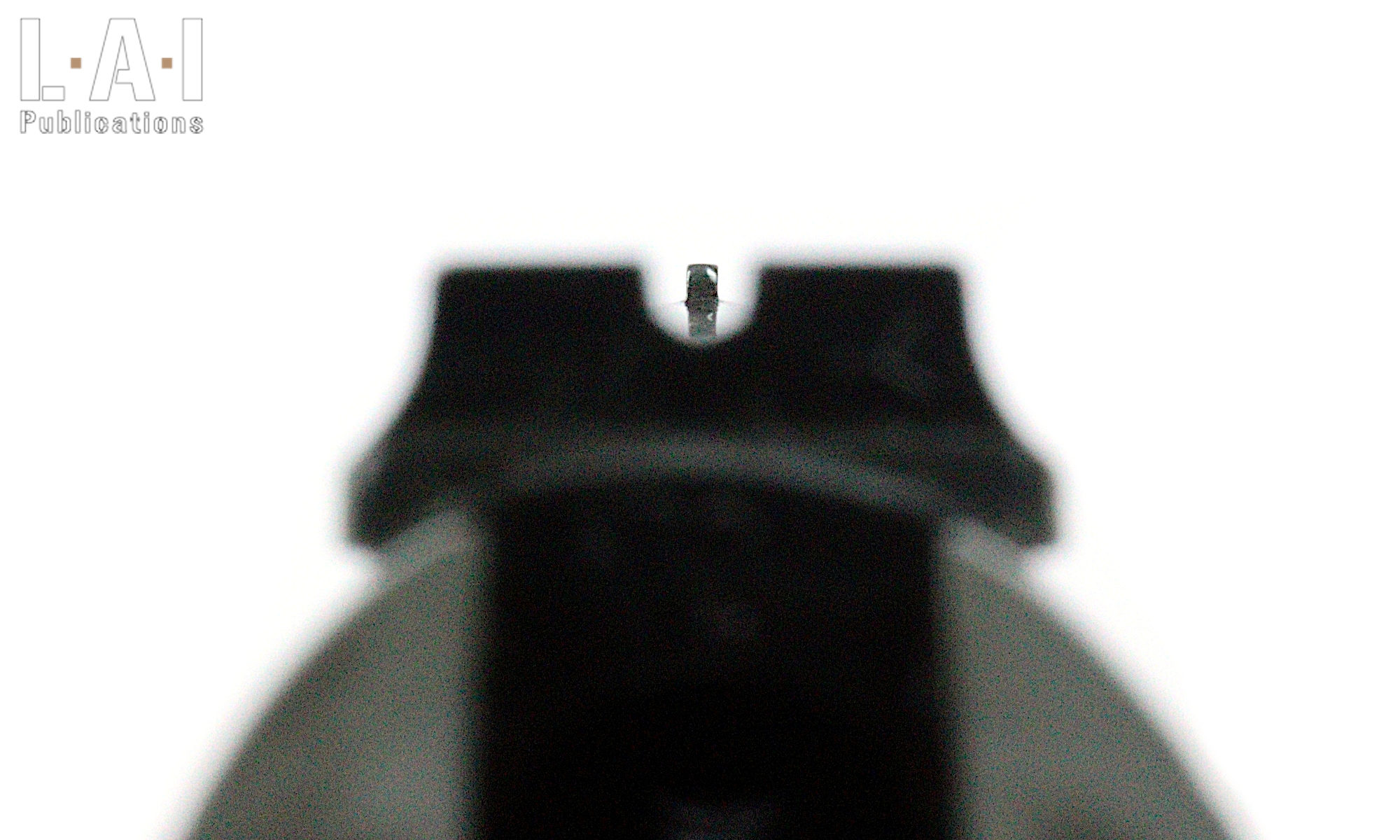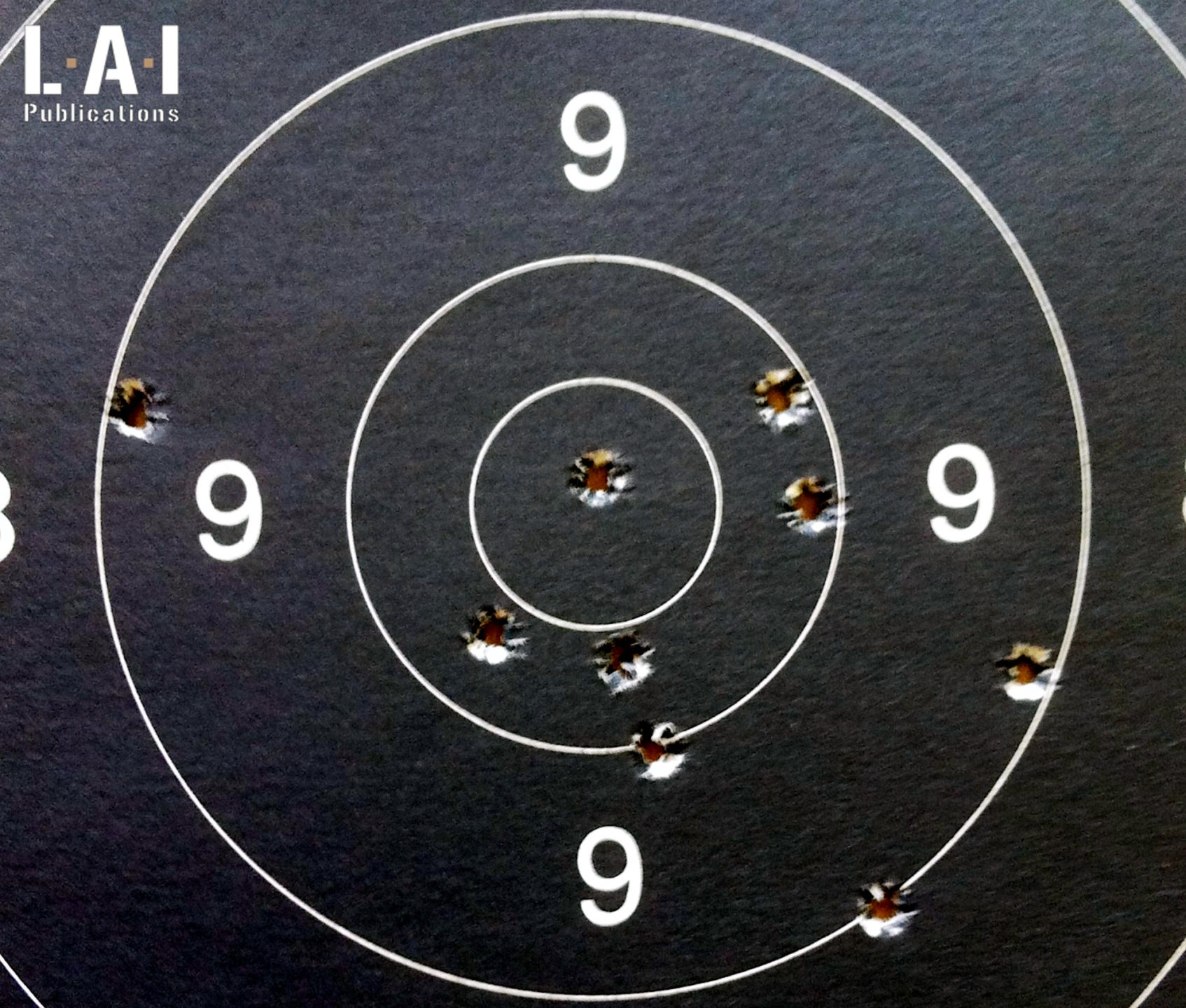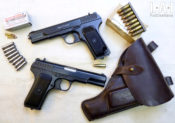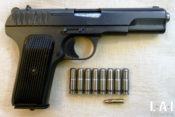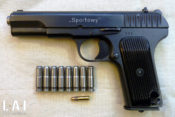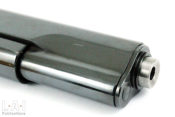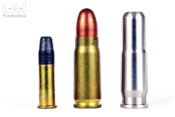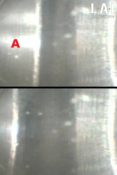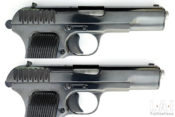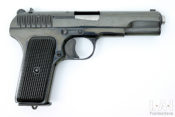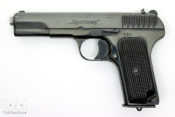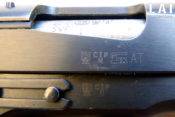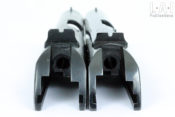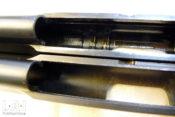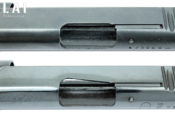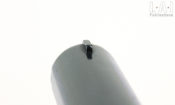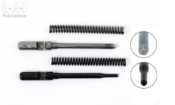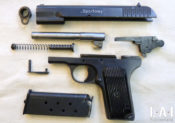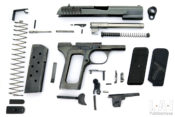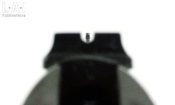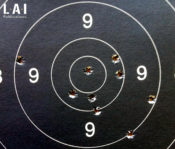Since the dissolution of the Soviet Union, the market has finally been able to offer emblematic weapons of this period that were previously difficult to acquire for shooters and collectors alike. Nagant revolvers, Tokarev and Makarov pistols soon appeared on many racks. Long guns were also quickly imported from SVD to various AKs (in countries where it is or was allowed!) and the inevitable Mosin-Nagant as well as some very interesting training versions in .22 LR and which are frequently visible on shooting ranges.
A Polish variant
Among this wide choice, TT 33 pistols have had a real success: they are cheap and often in excellent condition. Their ammunition, the powerful 7.62×25, was long confidential for civilian shooters. It can now be found anywhere and is available on a regular basis. We will not return in detail to the TT-33 pistol, presented here on this same site. But let us take the opportunity to recall here the first French articles of the 1970s which were still imbued with a perfume of mystery and Cold War! Often regarded and judged as a basic pistol at best to being a sloppy weapon by its worst detractors, the Tula Tokarev 1933 (TT 33) is nevertheless rich in common sense and fits its primary vocation, a military defense use. Indeed, like other Russian or Soviet productions, this pistol is reliable, robust, simple to use, to maintain and economical to produce. With the Nagant model 1895 revolver, the TT 33 would be the handgun of the Red Army during WWII. Replaced from service within the Red Army since 1951 by the Makarov pistol in 9×18 mm, it would remain commonly used in countries under Soviet influence and is still frequently encountered in Africa, the Middle East and Eastern Europe. The production (sometimes with certain variants or evolutions) of the TT 33 was carried out in the USSR, but also in the People’s Republic of China, Poland, former Yugoslavia, Hungary, etc.
In addition to variants related to the periods and countries of manufacture, some productions have significant changes: this is the case of the version presented in this article. This TT 33 version of Polish origin is designed for firing .22 LR ammunitions. Manufactured by the Radom factory, its name is “Sportowy”, which can be translated as “Sports”. The Soviets themselves had developed two models of TT 33 adapted to the .22 LR ammunition, with the “TT R3”, with a military profile, and the “TT R4”, intended for sports use. Far from being a modification intended for the civilian market, this “Sportowy” had a real service vocation in Poland: it was intended for the initiation and training of military and paramilitary troops. In conjunction with this adaptation of the service TT 33 Poland produced, under the Nitron trademark, ammunition of .22 LR that have even been exported to Western Europe.
Specifications close to the service weapon
The vocation of the weapon is obvious from the moment you have it in hand: to be a training version as close as possible to the service weapon. With the exception of the slightly longer barrel, the dimensions are identical and the weight very similar. (Pics.01 to 04). The implementation is also identical.
We therefore find our semi-automatic pistol with a single-action firing system and an 8-shot magazine. Like its big brother (yes, the Tokarev is a boy …), its only safety is a half-cocked notch, which in addition to keeping the hammer away from the back of the firing pin, blocks the slide in the closing position. Thus, when engaged, it is necessary to cock the hammer to be able to handle the slide again. The magazine catch button is also identical: positioned on the left side of the frame. The sights are identical as well: a “U” rear sight notch associated with a front sight blade. The user of the TT 33 will not be disoriented… or rather, the user of the Sportowy will not be forced to change his habits by switching to the TT 33! And that’s the goal…
The differences are obviously entirely related to the change in size. At the heart of these differences, there is a technical choice: that of using adapters, which act as floating chambers (Pics.05 to 07). Thus, the weapon no longer operates from a “locked bolt with a short recoil of the barrel” like the TT 33, but from a “straight blowback and reinforced impulse by floating chamber“. If the principle of straight blowback is generally well known to our readers (otherwise, you can consult Chapter 6 of the Small Guide for Firearms available on this site), the “floating chamber” principle probably requires some explanation.
In a floating chamber weapon, the ammunition case is not in direct contact with the barrel of the weapon, but in a sleeve (the floating chamber) that can move inside the barrel chamber itself. Often, this floating chamber is not in contact with the barrel on its front end: thus, during firing, part of the gases rush into this opening, and push the floating chamber backwards reinforcing its recoil. This is the case here (Pic.08). The impulse thus transmitted to the slide is thus amplified, even more so because the case does not expand against the barrel … but against the floating chamber that retreats! This principle is used with low-powered ammunition (such as the .22 LR) that must push a “massive” bolt (here, the slide). In addition to our “Sportowy”, one weapon illustrates this perfectly: the Colt Combat ACE… which is a Colt 1911 adapted to the cartridge of .22 LR! And this probably as early as 1931… The major difference between the two weapons on the use of the “floating chamber” system is the fact that the Colt ACE’s remains captive to the weapon: after transmitting the impulse to the slide, it remains inside the barrel. That of the Sportowy is ejected at the same time as the spent case! It therefore takes as many chambers (which we will call here “adapters”) as shots fired … but, actually 8, as for the capacity of a magazine. We note here that the Russian TT R3 and R4 also use a floating chamber system whose technical details are not known to us… but that we imagine to be similar!
The shape of the adapters is strongly reminiscent of the original ammunition. However, some dimensions nevertheless have notable differences (1 mm in this area, that’s already a lot!). The front part is longer and does not allow the use of these adapters in a conventional barrel, because it does not allow the slide to close (Pic.09). Conversely, it is possible to insert a 7.62×25 mm ammunition into the .22 LR barrel chamber (Pic.10). This point must be emphasized for obvious safety reasons, although the difference in positioning of the firing pin in relation to the bolt faceThe bolt face is the part of the bolt which in set place the... More (detailed below) between the centerfire (7.62×25) and rimfire (.22 LR) version protects the absent-minded shooter, as shown here using a primed case (Pic.11 and a short video at the end of this article). The adapters at our disposal were made of stainless steel (austenitic, therefore non-magnetic). It is sometimes claimed some adapters have been made of brass: if such adapters exist, it seems unlikely to us that they are of military origin. For this use, brass does not have a mechanical characteristic that would allow a reuse, risking deformations with each use … Similarly, the use of aluminum for these adapters, sometimes mentioned, seems unlikely to us… at least from a service point of view! When it comes to DIY, anything is possible… with more or less success.
In addition to the floating chamber function, the choice to use adapters has some other advantages:
- The adapters have the same head as the service ammunition, the weapon can keep the “same ” bolt faceThe bolt face is the part of the bolt which in set place the... More (we will see that it still has a difference) and above all, the same extractor / ejector couple.
- The weapon uses the same magazines as the weapon in 7.62×25.
- This implies that the manipulations are identical to the introduction of the cartridges of .22 LR in the adapters.
The interest is real from a production and logistical point of view, because many parts will be interchangeable or easily adaptable between the two weapons, unlike the use of a floating chamber captive to the barrel, which requires redesigning many parts: bolt faceThe bolt face is the part of the bolt which in set place the... More, extractor, ejector, magazine …
This floating chamber arrangement is coupled with another device probably intended to strengthen the recoil of the slide: the barrel is not fixed, but recoils of more than 5 mm (Pic.12). This arrangement, which is neither the result of chance, nor a defect of adjustment (5 mm… That’s considerable!), allows to transmit part of the recoil of the barrel to the slide … further amplifying – at least in theory – the re-armament impulse. We add “at least in theory”, because we feel this last provision to be superfluous: the floating chamber in all likelihood takes over in terms of recoil during firing. We do not hide that this provision questions us: it is perhaps only there to facilitate the feeding of adapters between the magazine and the barrel … But when handling, the thing does not seem necessary and the arrangement unreliable in this purpose, because nothing constrains the barrel backwards during the forward movement of the slide … well, anyway.
The two copies examined
Before continuing the description of the Sportowy, let’s introduce you to the two copies used for the realization of this chapter:
- A copy from 1955, mirror finished and blued. Its serial number (anonymized by concealing the last two digits) is S37XX (Pics.13 and 14).
- A copy from 1956, with a matte “war black” blued finish, more rustic. Its serial number (anonymized in the same way) is S11XXX (from Pics.01 to 03).
Both copies bear the following markings:
- On the top of the slide, at the back of the ejection port an “11” in an oval (codified marking of the Polish Radom factory during the Soviet era), the year of production and the serial number of the weapon (Pics.15 and 16).
- On the left side of the slide, the model of the weapon “Sportowy”.
- On the left side of the frame, the full serial number.
- To the right of the lower part of the barrel, at chamber level, the full serial number. This number is not visible with an assembled weapon.
- On the firing mechanism body, the last three digits of the serial number.
There are also a few hallmarks here and there, but ultimately only a handful of markings… and in particular no mention of the caliber! Too bad, it would have been interesting to see if the name used was “.22 LR” or “5.5”… or even something else entirely!
On the 1956 copy, the weapon received the markings following its passage to the CIP proof-test, in this case, in Austria (Pic.17).
Many similarities, but some differences
In the range of differences, we will obviously start with the barrel. When shooting, as already mentioned it is mobile in the frame, but in a different way to its big brother. If the barrel of the TT 33 recoils while tilting its rear part downwards in order to disengage its lugs from the recesses of the slide, the Sportowy’s recoils linearly without there being any interaction (other than frictions…) with the slide. Thus, in addition to the barrel bore diameter (suitable for the .22 LR bullet), the chamber (suitable for adapters), the barrel foot is significantly different. Concerning the latter, a simple oblong machining open on the front allows this recoil (visible on Pic.09). The lower part of the foot is adapted to the groove present at the bottom of the frame and normally intended to allow the work of the barrel link of the TT 33.
The friction between the slide and the barrel has been reduced to a minimum: the machining of the barrel is carried out in such a way as to avoid contact between these two parts. This results in very visible gaps in the ejection port… and that are somewhat unsightly (Pic.18). But here the goal is to make this weapon as reliable as possible in its context of use: the shooting range, not war!
It is noted that the muzzle of the barrels of the two copies have received a care worthy of a match weapon, with pronounced chamfering (visible on Pic.04). Finally, as already mentioned, it is 5 mm longer than the barrel in 7.62×25: a layout whose usefulness is most likely to distinguish the weapons at a quick glance!
The slide is most likely from the same blank as of a TT 33’s (production pragmatism), but with differences in machining:
- If the firing pin is very close to the centerfire weapon, its channel has a larger diameter up to the bolt faceThe bolt face is the part of the bolt which in set place the... More (Pics.19 and 20). This channel is machined in the same axis as the weapon in 7.62×25.
- The bolt faceThe bolt face is the part of the bolt which in set place the... More is off-center downside, which allows the firing pin to be positioned, which is therefore in the same axis as the centerfire one, on the periphery of the .22 LR ammunition.
- The weapon firing from a straight blowback bolt, locking recesses are not necessary. They were not machined on the 1956 model but are present on the 1955 model (Pics.21 and 22). We deduce that the 1955 weapon was built with elements taken (perhaps scrap!) from the production line of the service weapon: industrial pragmatism!
- The ejection port has been widened to take into account the size of the adapters when ejecting, but also the lower positioning of the barrel in the weapon. Milling was therefore carried out at the front of this opening (Pic.23).
The slide streaks are “standard” variants produced before 1947 in the USSR. The rear sight has the same profile as on a 7.62×25 weapon, but it is lower due to the ballistic differences (visible in Pic. 20). The front sight is identical (Pic.24).
The extractor group is identical to the TT 33’s. The firing pin is very close, but its tip is adapted to the specificities of rimfire: with a larger diameter on its front part, it is flat and not rounded like its big brother in centerfire (Pic.25). For the record, on a rimfire, the firing pin must pinch the rim of the ammunition head on the rear edge of the barrel: a flat shape at the end of the firing pin is therefore not inconsistent, even if some manufacturers of .22 LR weapons use a rounded tip.
Note that the weight of the complete slide is almost identical to the TT 33’s. This is neither trivial nor the result of chance: this corresponds to the desire to produce a weapon as close as possible to the service weapon. It would have been easy to lighten this slide in order to conform it to the use of a less powerful ammunition, but this is not the direction that was taken!
The bushing is standard. The recoil spring, made of the same strand of steel as the weapon in 7.62×25, was amputated by 13 coils (35 against 22) to reduce its resistance (Pic.26). All the forces (floating chamber, barrel translation, reduction of friction) are not sufficient to reproduce the energetic rearmament impulse of a 7.62×25. This is not surprising: 487 Joules (7.62×25, 5.52 g bullets at 420 m/s) against 139 Joules (.22 LR, 2.56 g bullets at 330 m/s)! The cap and spring guide are identical to the TT 33’s.
The frame is identical in all respects to the service TT 33. Two synthetic grips are embedded on the frame by swivel blades as on the TT 33, but these are striated vertically without any logo or marking. This specificity is also found on other Polish TT 33s and is therefore not exclusive to this .22LR variant. The firing mechanism, which is for the record, removable on the TT 33, is almost identical on the Sportowy, except for a single detail: the hammer spring. Without surprise, as for the recoil spring, it is a shortened version of 3 coils (18 against 15) compared to the 7.62×25 weapon. Indeed, the hammer spring of the TT 33 is quite vigorous and consumes a significant amount of energy during rearmament. In addition, .22 LR ammunition does not require the same energy for firing as the service 7.62×25 equipped with hard primer to meet military requirements.
The magazine is a standard military model, made of steel and with a capacity of 8 cartridges in single stack.
The disassembling method is completely identical to the TT 33’s. This one being described in detail in the article dedicated to the latter, we will not present it here (Pics.27 to 29). The difference between the barrel feet does not change the disassembly procedure, but simply the attention to be paid to the repositioning of the guiding rod of the recoil spring and to the off centering of the barrel downwards before repositioning the slide stop.
A playful and accurate pistol, out of the ordinary
Taking up the ergonomics of the TT 33, the grip and balance are far from being a model of its kind, especially the angle of the butt. This one is almost at right angles and requires the shooter to raise his hand to take a correct aim. The first contact is surprising, but it is clear that we quickly get used to this particularity. All manipulations are easy, the recoil spring having been adapted accordingly, the slide is particularly flexible to handle.
We carried out our tests at distances of 15 m and 25 m, on 50 Pistol targets and 20 cm-sided square metal gongs. Filling adapters is easy and poses no difficulty. The trigger release is obviously very close, not to say identical, to the TT 33’s: after a first stroke of a few millimeters, a hard point immediately precedes the release. The latter are regular and do not scratch. The releases were measured at 2 kg on the 1956 copy. The sight picture, identical to the weapon of war, makes it possible to correctly catch the bullseye of the target (Pic.30). The recoil is almost non-existent, the ejection is powerful and original to say the least. The .22 LR brass does not stick in the adapters, during ejection and by inertia effect, they are expelled forward while the adapters are ejected backwards. The use of a brass chute is strongly recommended so as not to misplace the adapters and not to spend a certain amount of time searching for them. During our test, the use of high-velocity ammunition was necessary for the proper functioning of the weapon. We used Winchester High Speed and CCI Blazers: standard ammunition and a fortiori subsonic do not allow the reloading of the weapon. This is, you will tell me, a good method of not losing the adapters, but question about the ammunition used in Poland.
The accuracy is very satisfactory, from the first shots we regularly hit our gongs, the precision test was carried out at 15 m with one hand (Pic.31). The primary destination is not pure precision, but this pistol can without blushing, rub shoulders with its competitors on the shooting range.
To conclude
With a strong playful potential, correct precision and reliable and probably indestructible mechanics, this “Sportowy” has the qualities to delight the majority of lovers of original or military weapons. This model can also allow owners of TT 33 in 7.62×25 mm to train economically and in any sports shooting range (some do not like the service ammunition). As these weapons have not been the subject of significant production, it is better to seize the opportunity to acquire one when it arises.
Julien Lucot & Arnaud Lamothe
Thanks
Armory ST Militaria: Yannic Fogelgesang, for the provision of the 1956 copy.
Armory ESISTOIRE: Laura, Yann, Laurent and for the provision of the 1955 copy.
Armurerie Languedoc-Distribution, Olivier Moitrier for having allowed the realization of the test of the weapon of 1956.
Philippe Regenstreif, for providing information on the model.


